Links to other Blogs in the Panamá Series
Introduction
What comes to mind when you mention the Darién? I think there are a variety of thoughts depending on your background and your experiences. Everything from “Huh? What’s that?”, to “That’s a really dangerous place to go.” to “That seems like an amazing and beautiful place!”. I was always in line with the latter response and was anxious to validate my preconceived thoughts depicted in the photo below.
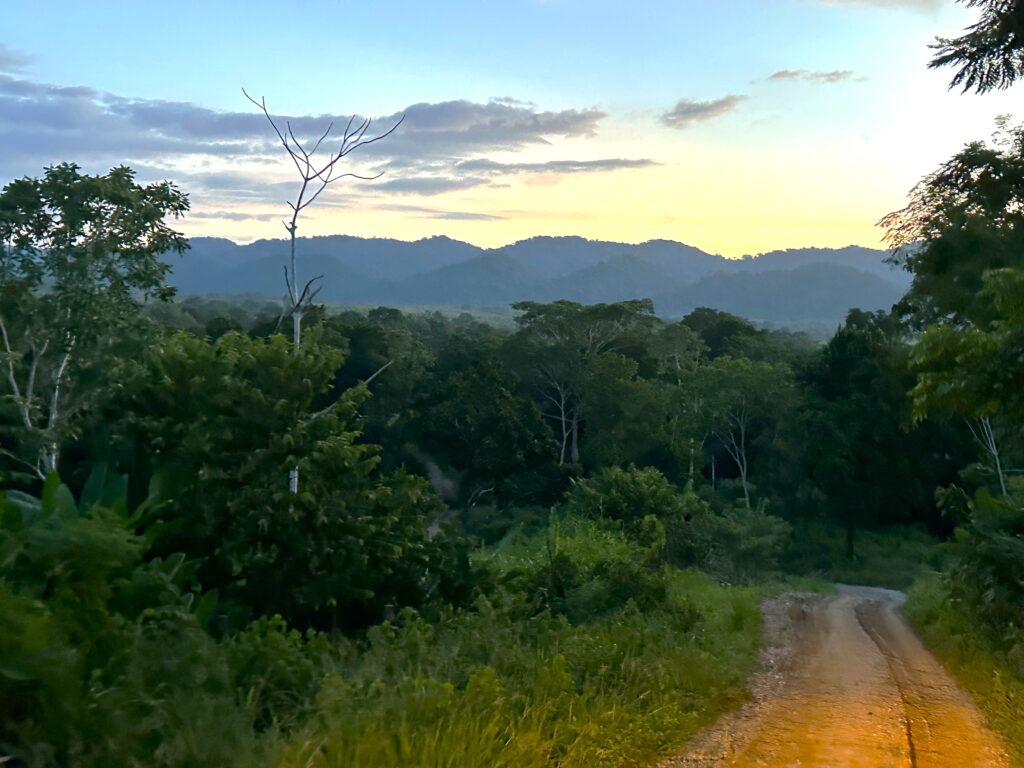
Mirka and I checked into the Riande Airport Hotel in Panamá City that would host us the night before being shuttled to Canopy Camp in the Darién. With much interest and speculation, we pondered if other couples we saw in the restaurant and lobby were in our party, particularly if they looked like us: retirement aged and clearly not Panameño. Should we be friendly and open a conversation? Or not, and avoid potential embarrassment. Being the shy person that I am, we decided to wait and see who lined up at the shuttle in the morning.
Turns out, no one we saw the night before was lining up for the shuttle. Who was there? Liz, a lovely Aspen native with tremendous drive and spirit, and Brett, a young (age is relative) man from DC on vacation before heading to Africa for work. Each was travelling alone and each would be delightful companions for the next week. Our group of four made up the entirety of Canopy Camp for the week. Perfect.
Our Guide
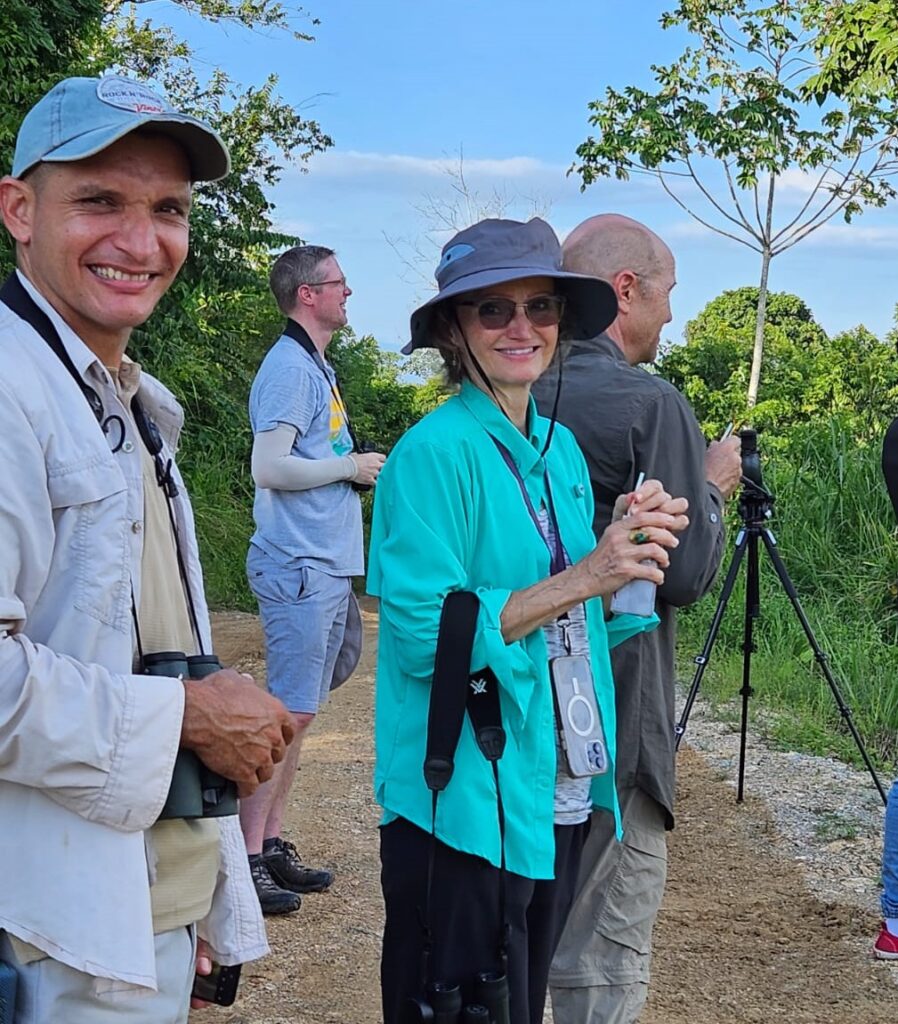
Oscar Frias would be our guide and companion. Our timing was perfect. The other guides were off on a meeting for the week and Oscar would be the only guide we would have. Turns out, Oscar is from the Darién. A local boy who has done very well and a solid family man. We would soon learn that his skills as a birding guide were second to none.
Only birding since 2019, his knowledge of birds, bird sounds, habitats, etc was very impressive. He can vocalize most any bird in the forest and spot and recognize birds in an instant. He is also very patient and understanding of his clients’ needs. Clearly, I cannot say enough good things about Oscar so I will just stop now.
The Canopy Family
The Canopy Family of eco-businesses includes three birding-centric lodges and a zip-line park in El Valle de Antón. The business is the manifestation of Raúl Arias de Para‘s passion for conservation and education and began to take palpable form 30 years ago. Raúl is a US educated Panamanian politician, activist and best-selling author still engaged in the business.
Getting to the Darién
We made three stops on the drive to Canopy Camp: a potty break, a lake and a restaurant. Highlights from these stops were a kettle of Mississippi Kites (est. 700), Fork-tailed Flycatcher, Smooth-billed Ani, Forest Elaenia, Golden-collared Manakin, Jet Antbird and Snowy-bellied Hummingbirds on the feeder at the restaurant. In total, 11 new lifers on those three stops. Wow.

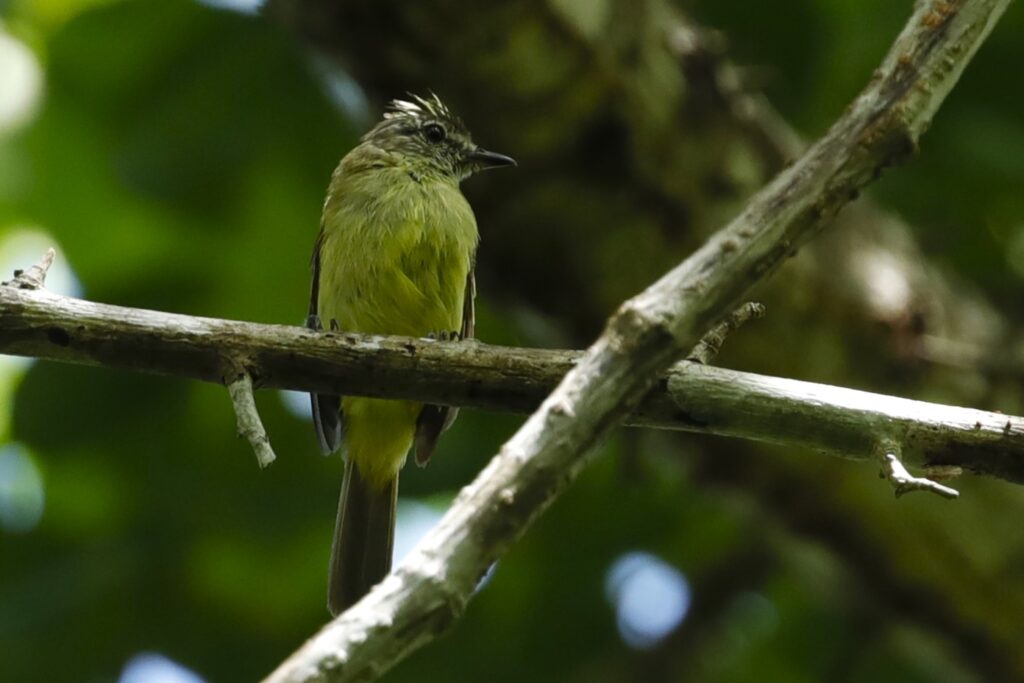

One thing that we noticed and expected as we made our way further and further down the Panamerican Highway was the condition of the road. It kept getting worse, and we were still in Panamá Province. Progress was becoming slow due to road conditions. How bad would it get after leaving this province and entering the wild, untamed Darién? As it turns out, it gets a lot better. As soon as we passed under the big sign informing us where we were, the potholes vaporized, and we were on smooth black-top. A pleasant surprise and one that Oscar proudly noted.
Arrival
As we pulled off the PanAm highway and made our way through some farmland and into the jungle that is Canopy Camp, our excitement built. Upon arrival our bags were quickly shuttled to our lodging and we all gathered in the common area awaiting our orientation by Oscar. I can tell you that staying focused on the orientation was difficult. Dozens of hummers were buzzing the numerous feeders and there were many other exotic sounds in the surrounding trees. Quite the distraction.


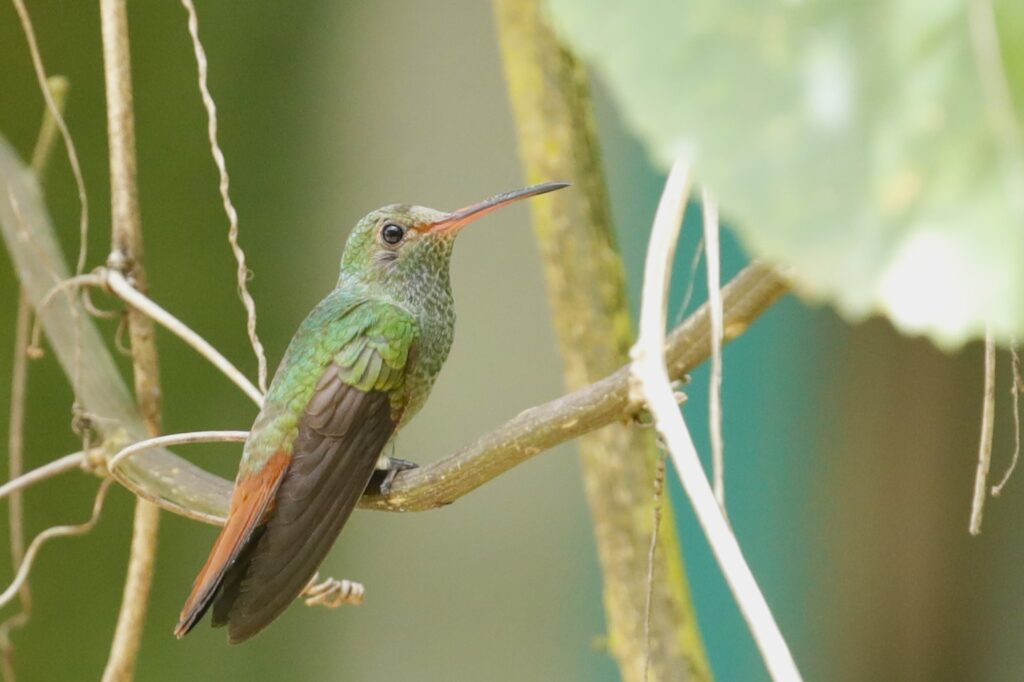
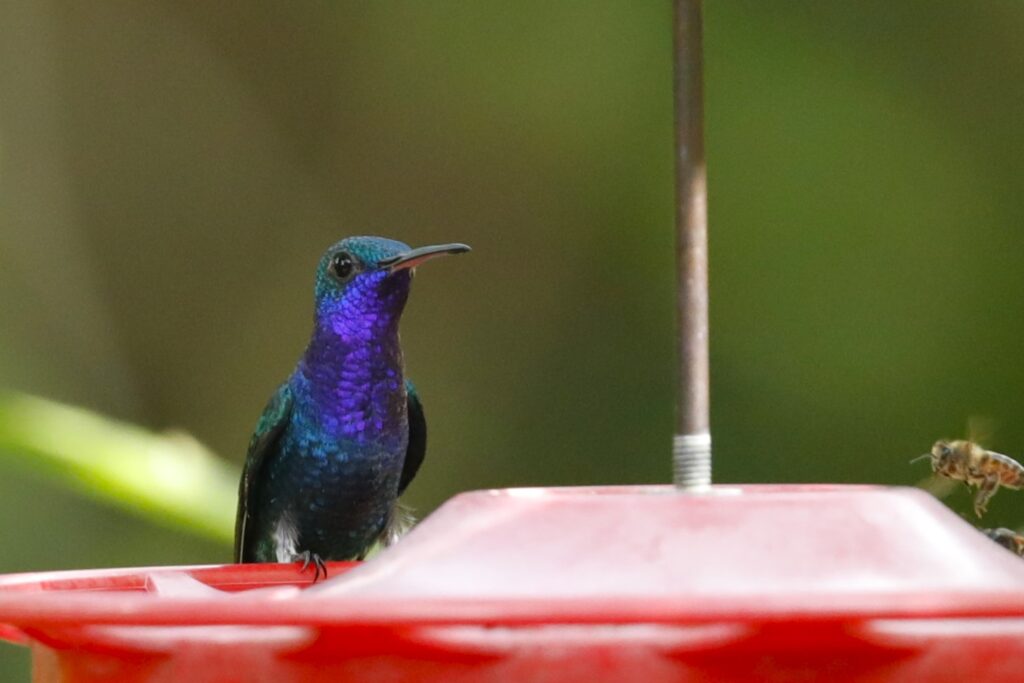
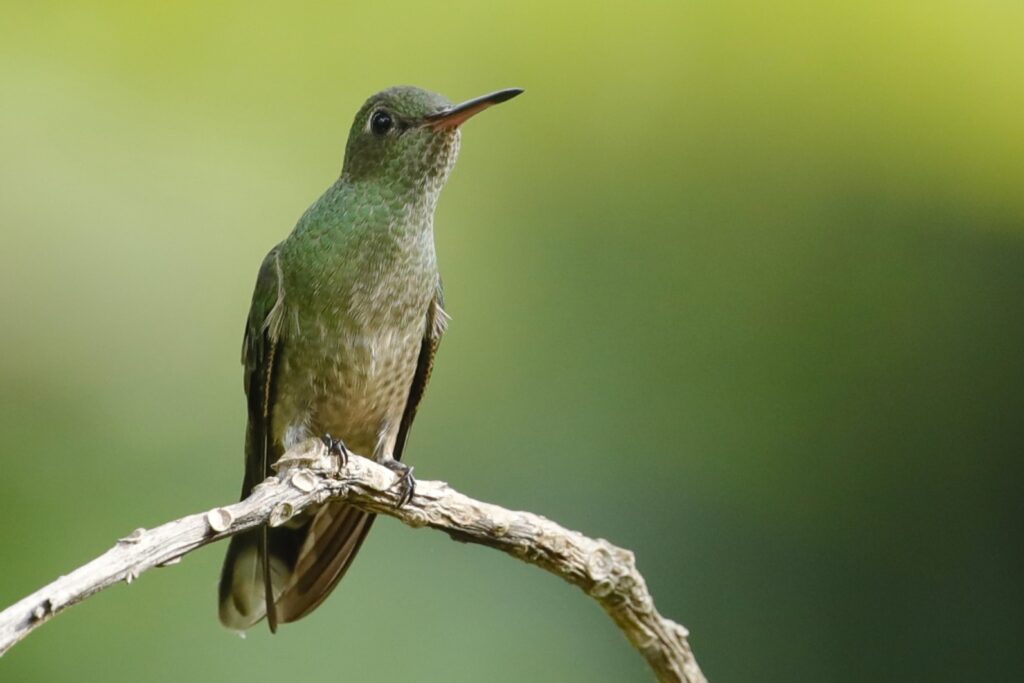
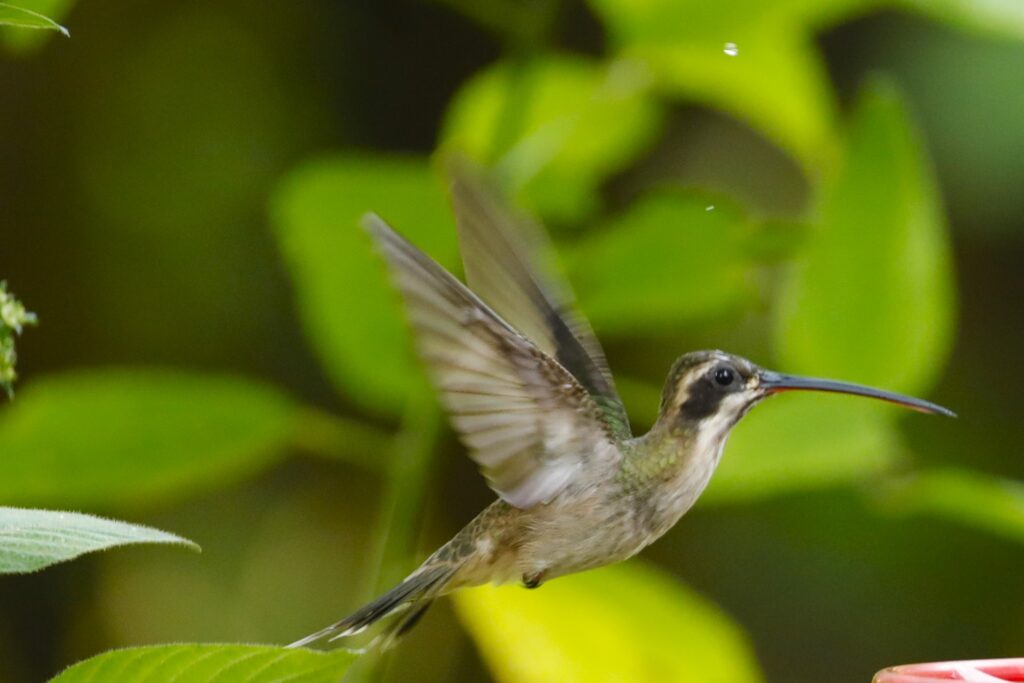

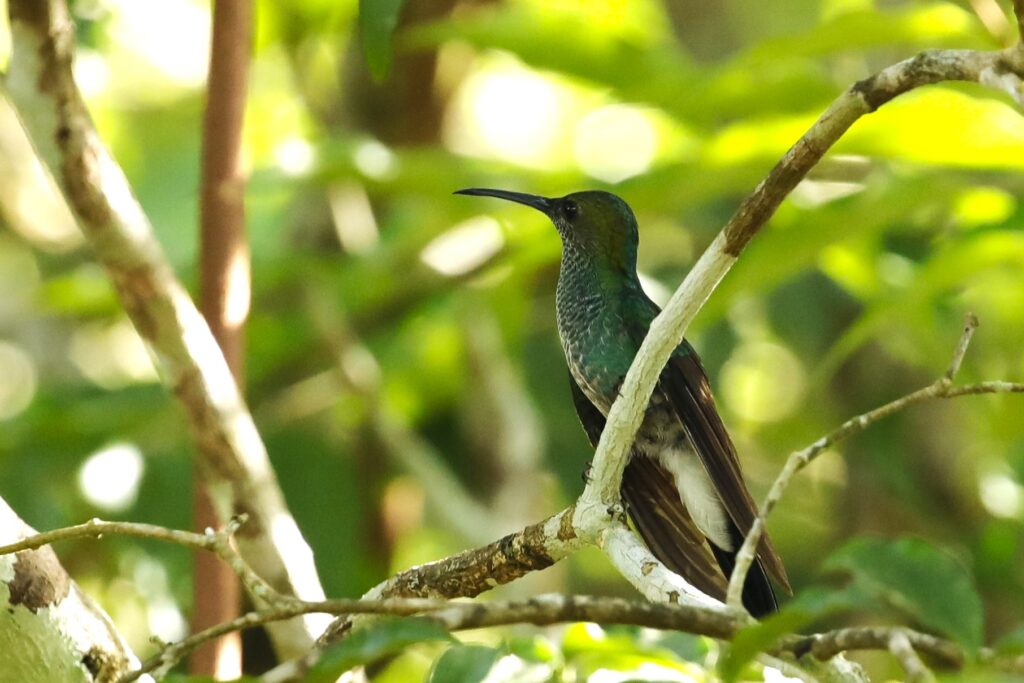
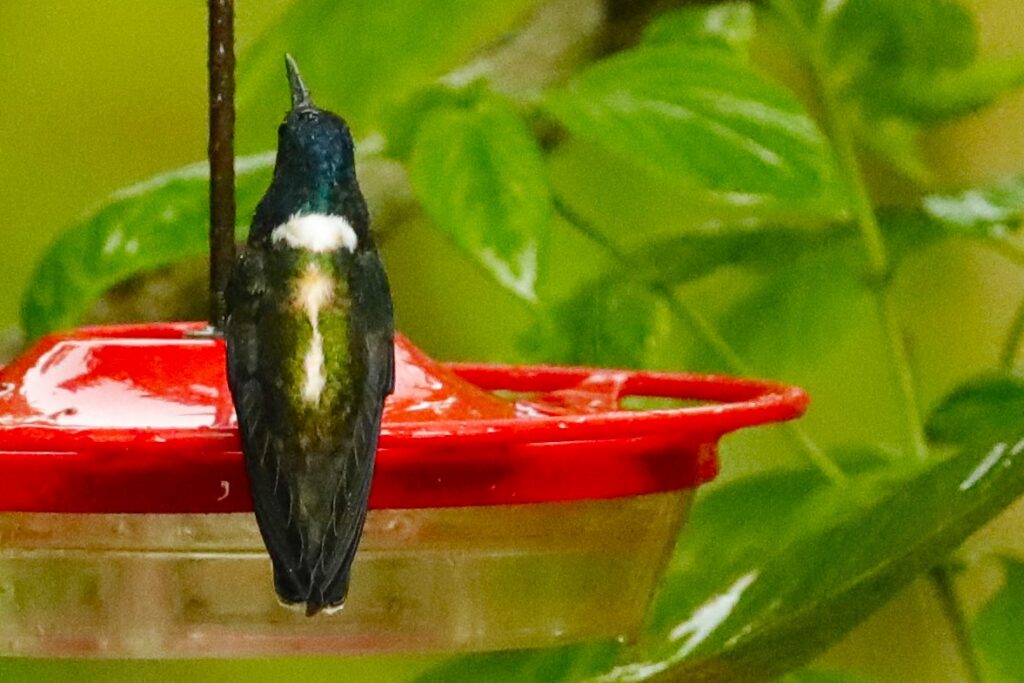
The accommodations were basic safari +. Two room canvas walk-in tents set on a raised wooden platform with a large deck in front and chairs to enjoy the view of the White-tailed Trogon in the jungle. A concrete block bathroom was built to the side and accessible directly from the platform. The 8 tents are laid out for privacy. All are about 50 yds from the common area. Electricity, yes. Running water, yes. Air Conditioning, no. The food: Nothing short of fantastic. The staff: Amazing, professional, friendly and dare I say educational. Yes, they gave instruction on the proper method of making patacones with Liz and Mirka!
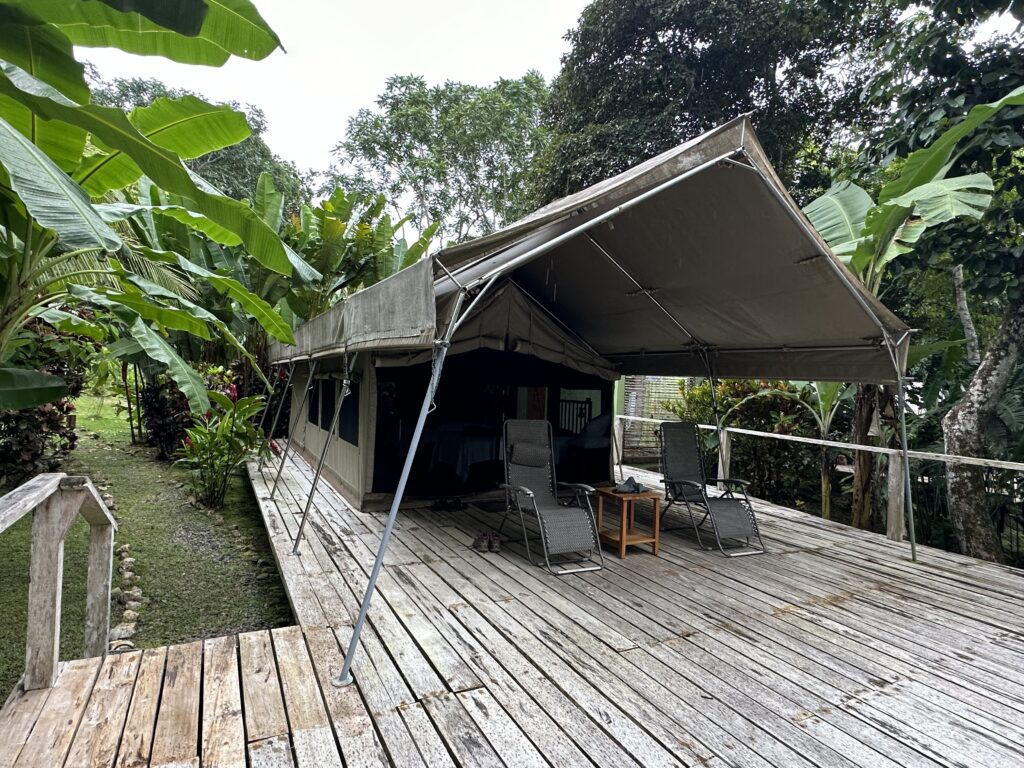
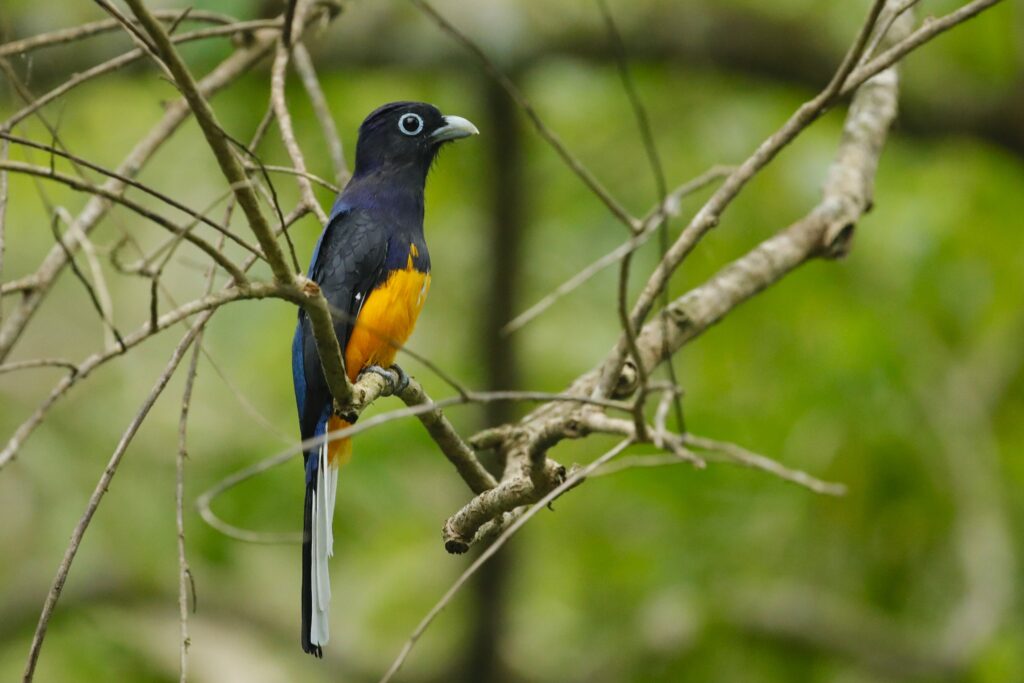
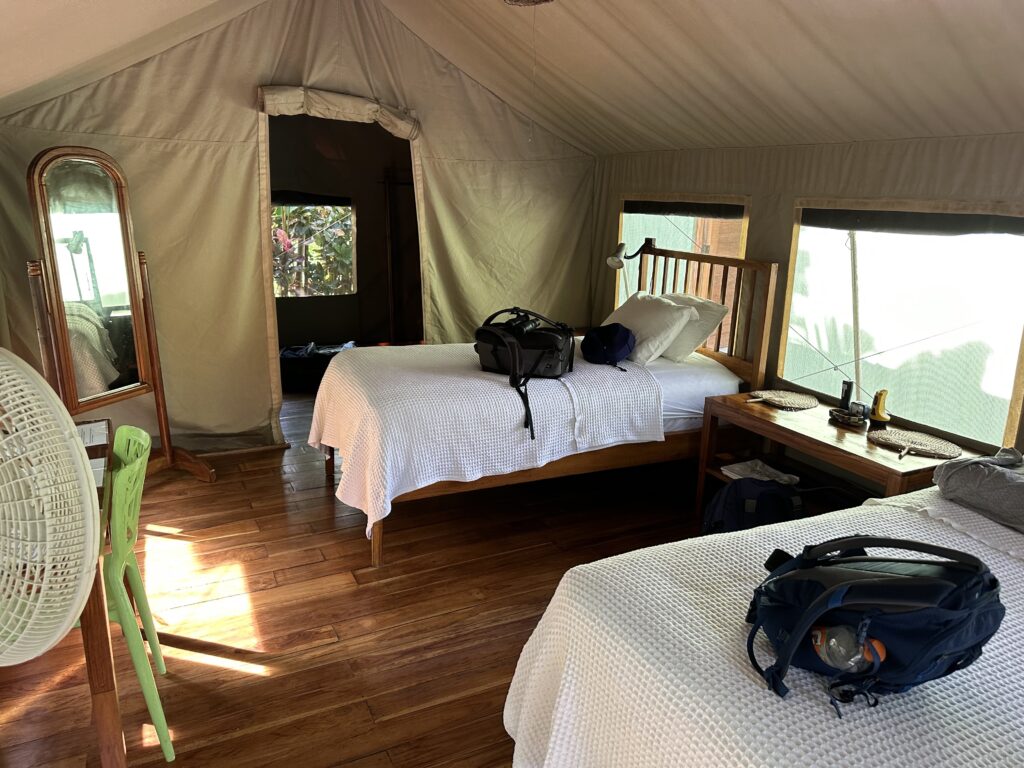
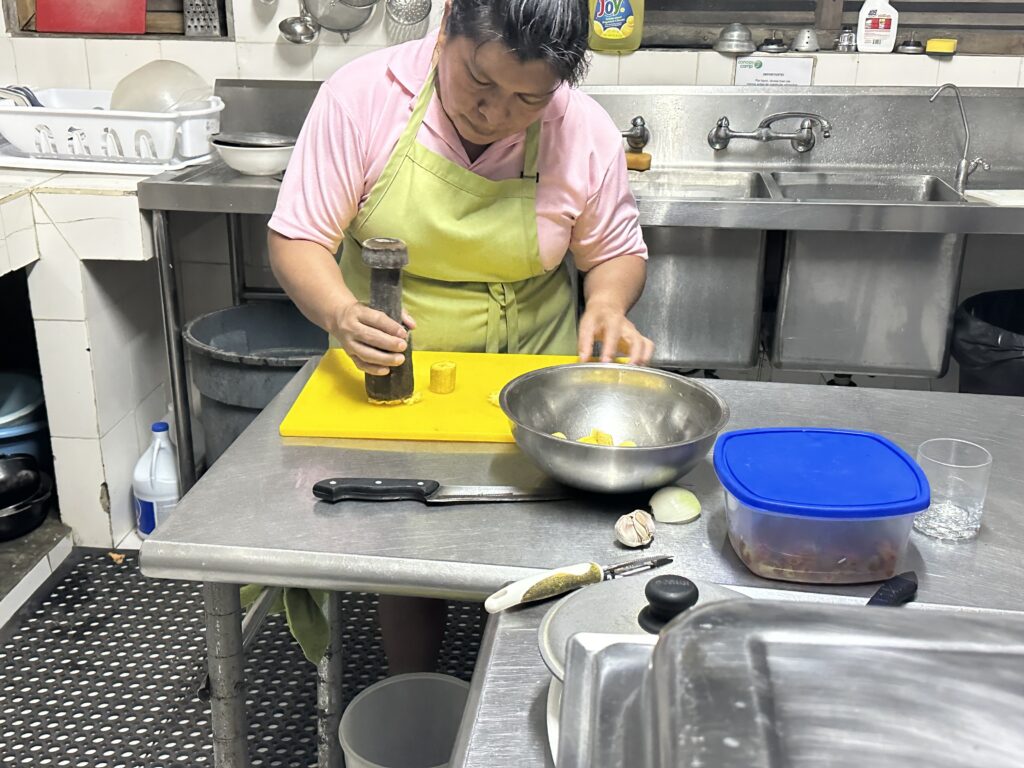
We spent the rest of the afternoon trying to figure-out the hummers. I had four new ones. While walking the grounds with Oscar, eleven new birds were added on that first afternoon. Most notable was Great Potoo, Great-green Macaw and Slaty-tailed Trogon. After dinner and a beer, we went off to bed in preparation for our first full day in the Darién.

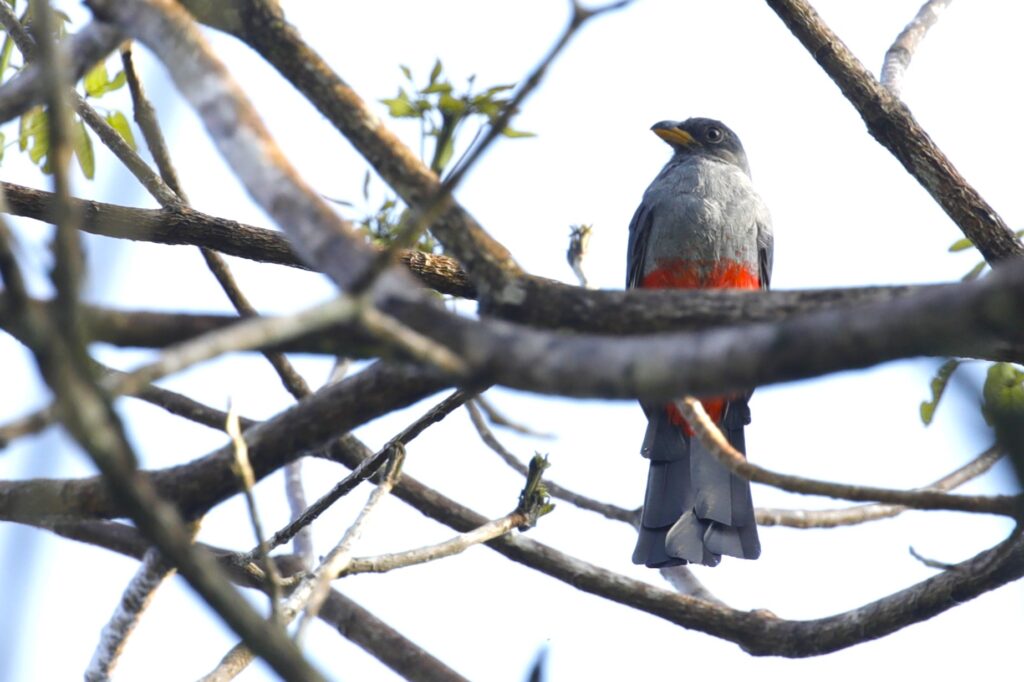

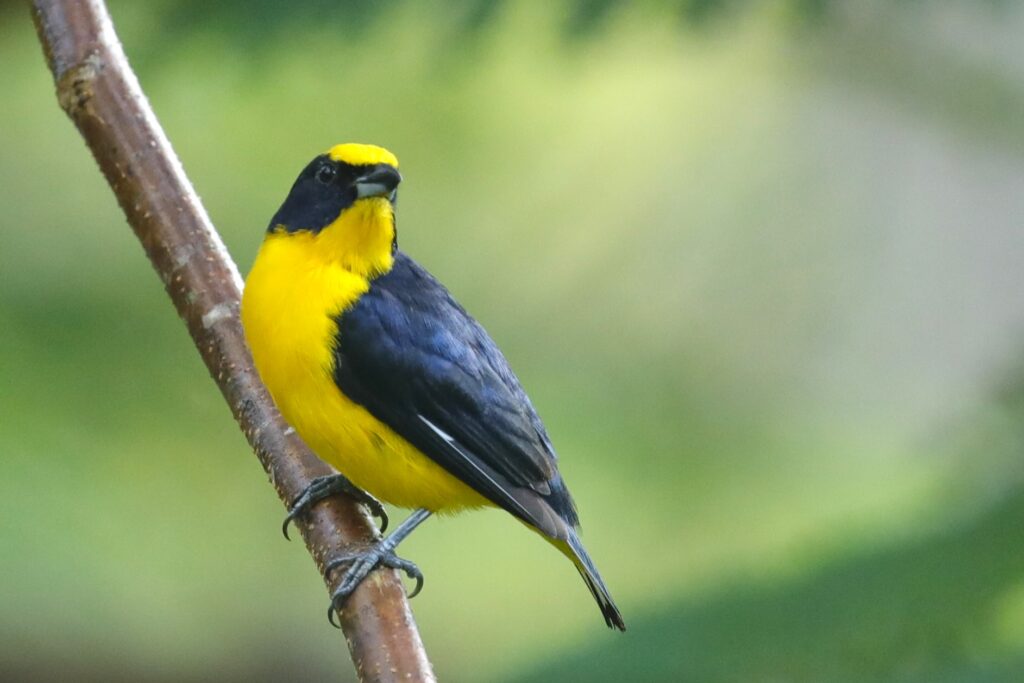

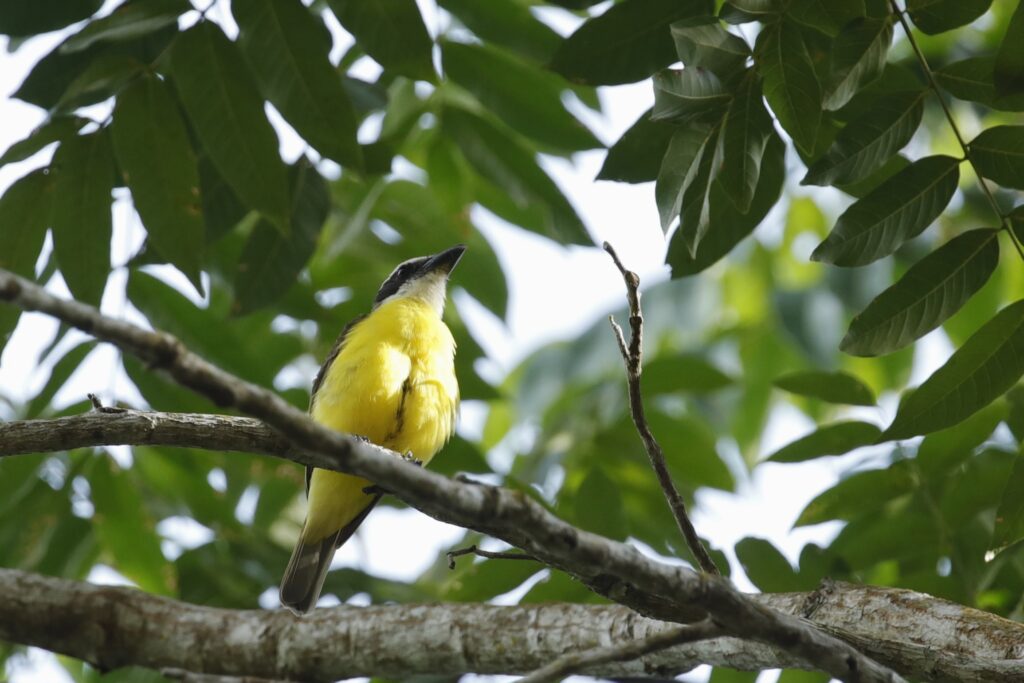
The days would be grueling (if that term applies to doing what you love all day, every day). Up before dawn. Back to the camp for a 2-3 hour lunch and siesta. Back out and return for dinner at or after sunset. The climate: hot and humid. The bug situation: mosquitos and sandflies (chitres), but variable. 10,000 to 20,000 steps per day. To be honest, with my wife not having the same level of enthusiasm for birding as I do, I fully expected her to bow out of some of the outings. Hats off to Mirka, she went on every trip and started to enjoy the birding aspect more and more during the week.

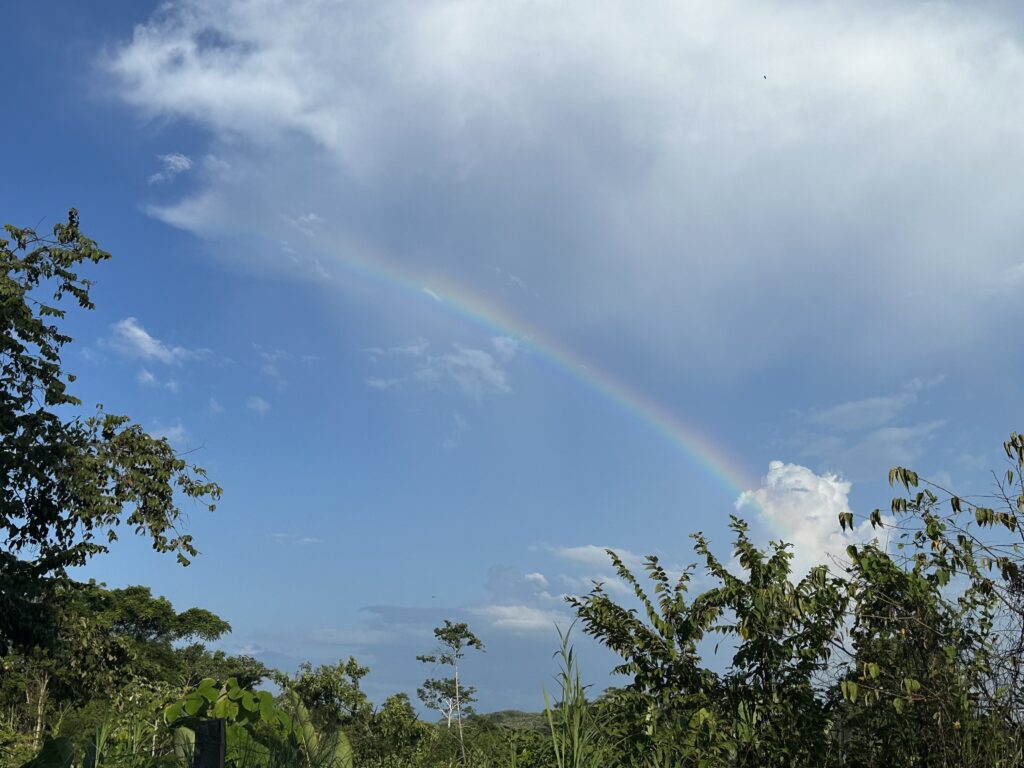
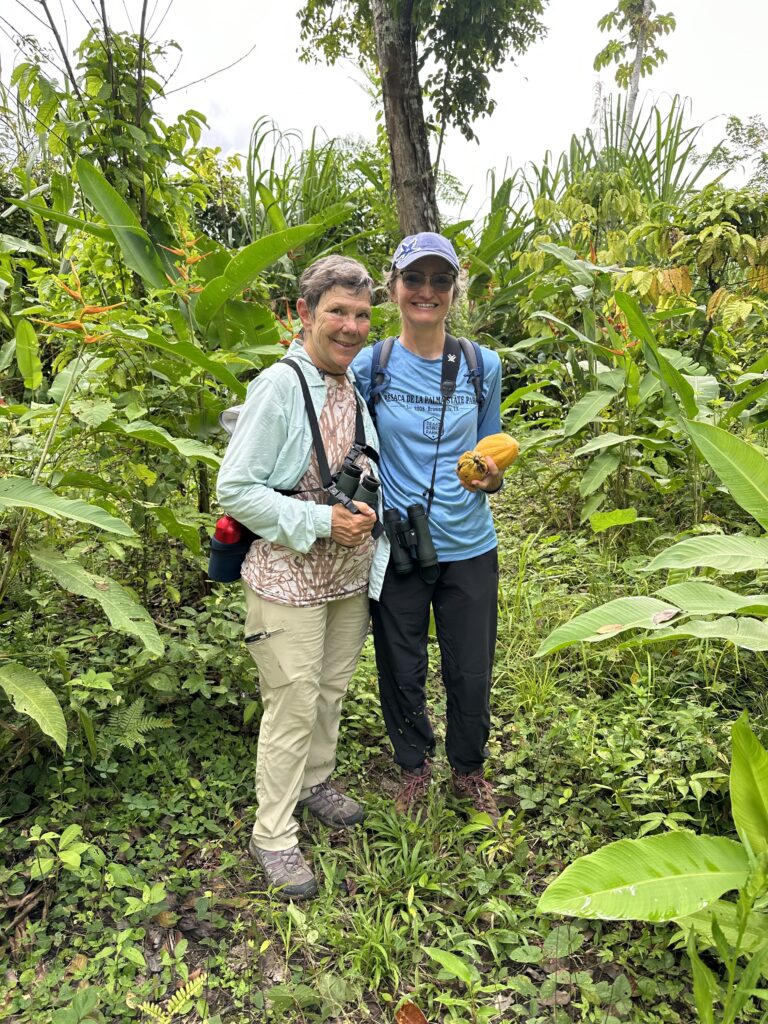

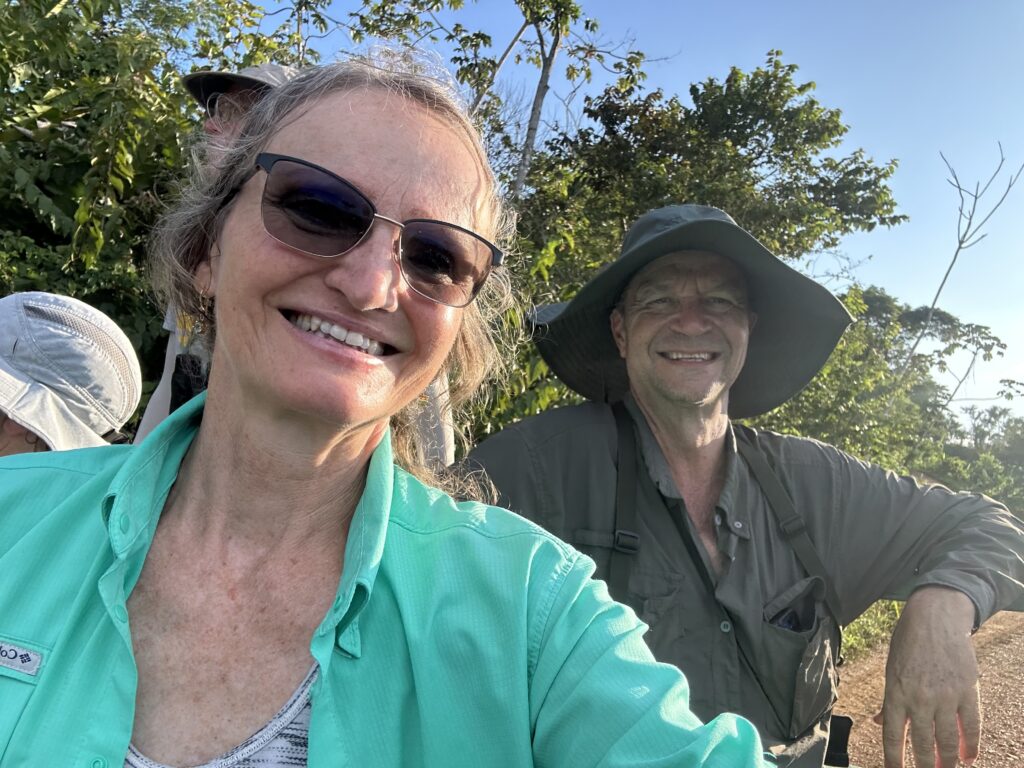
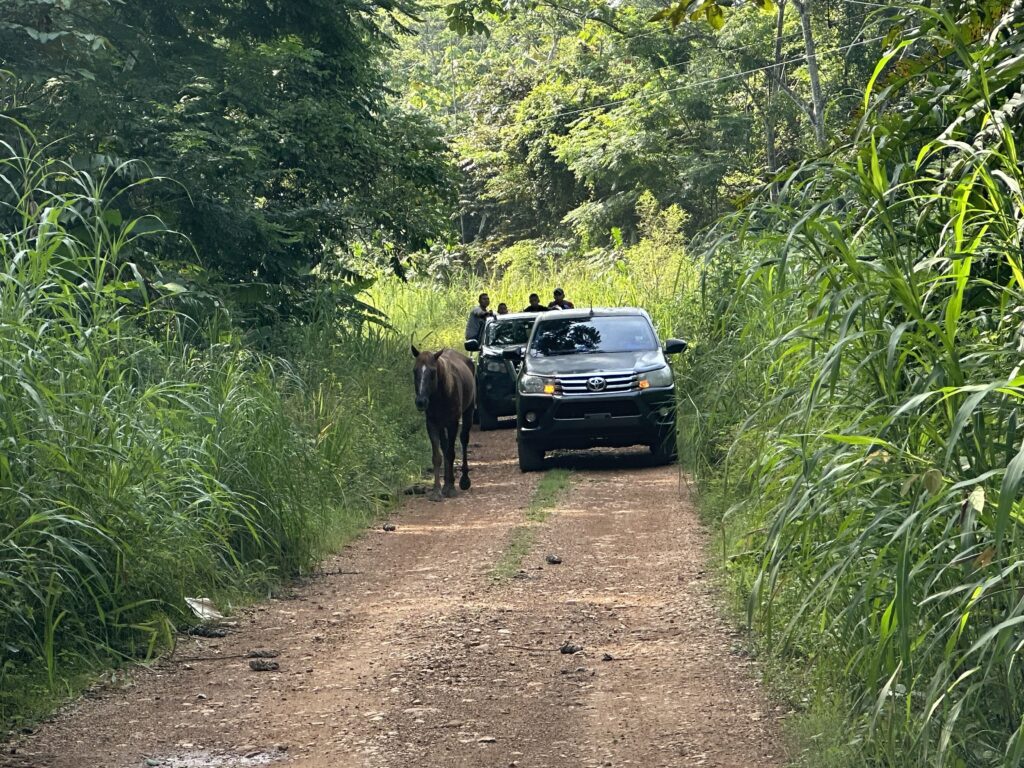
And oh the birds!
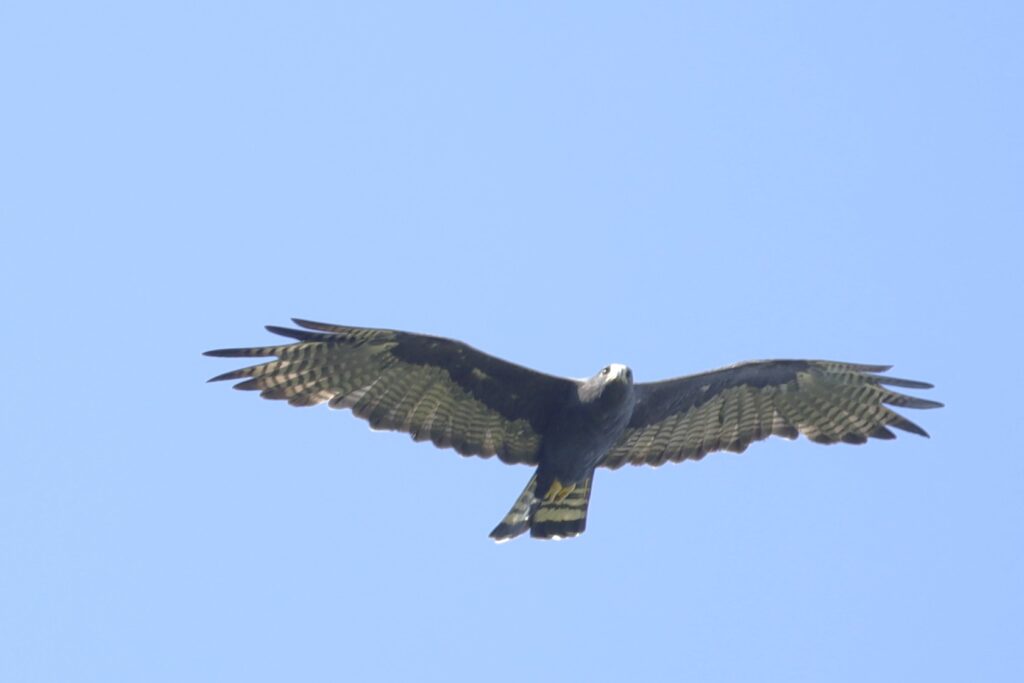
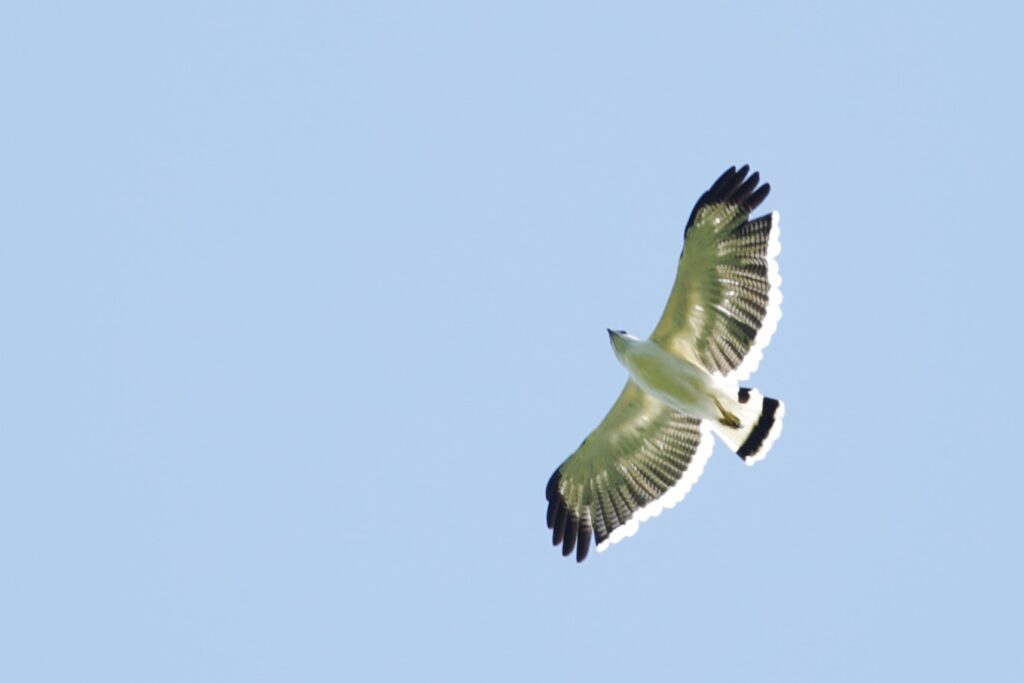
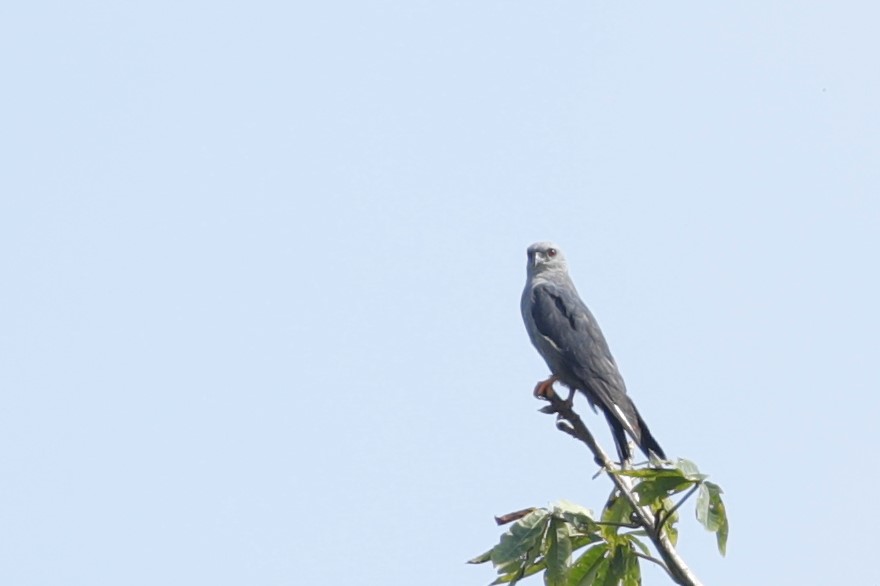
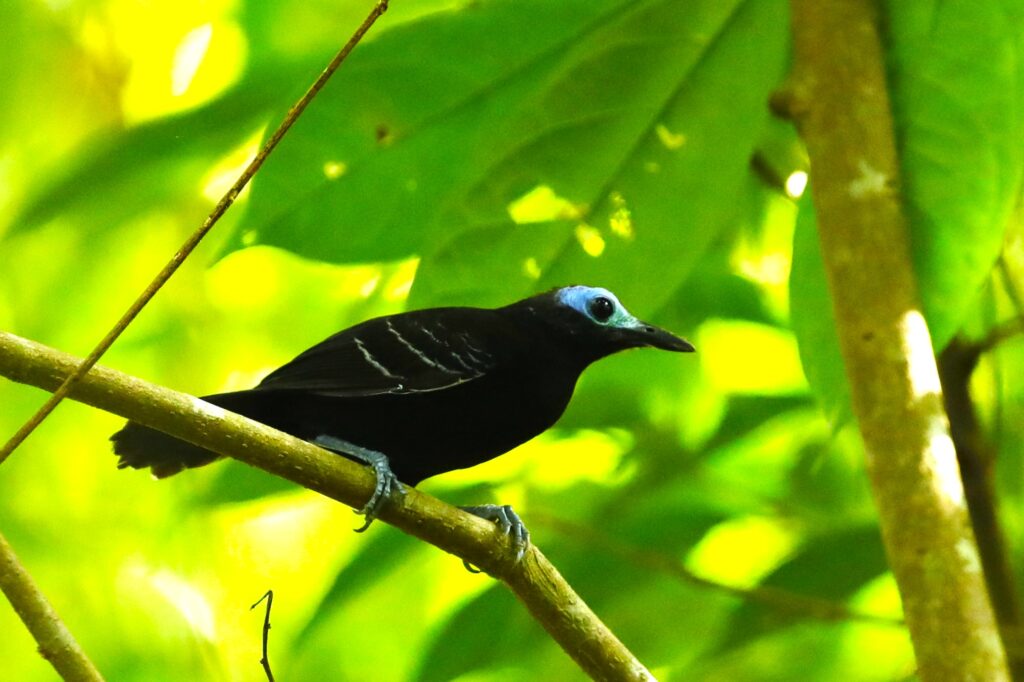
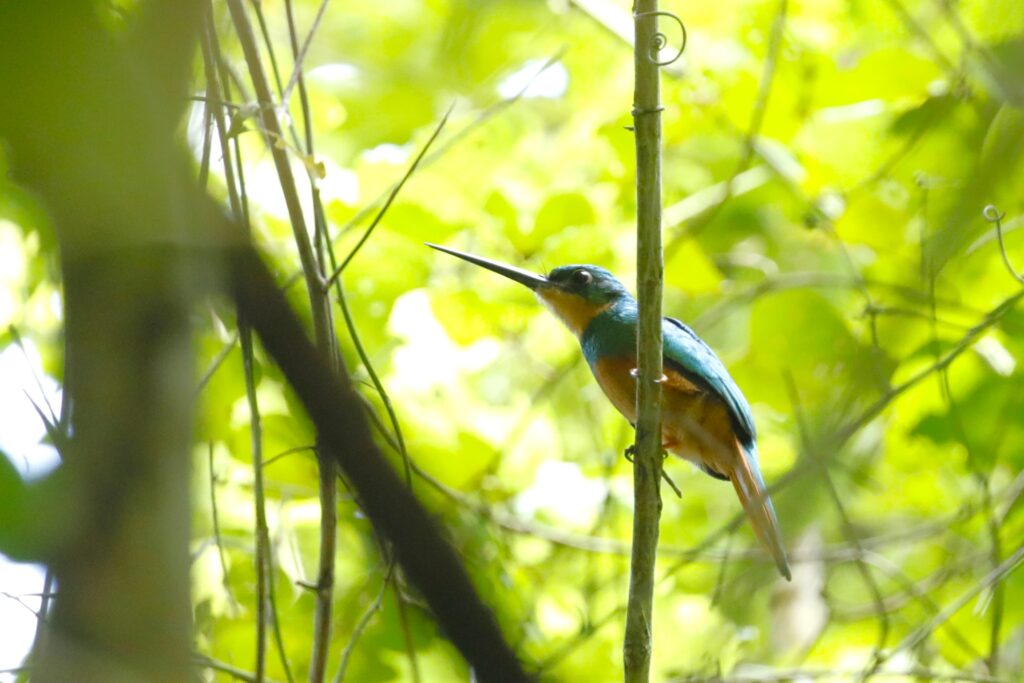

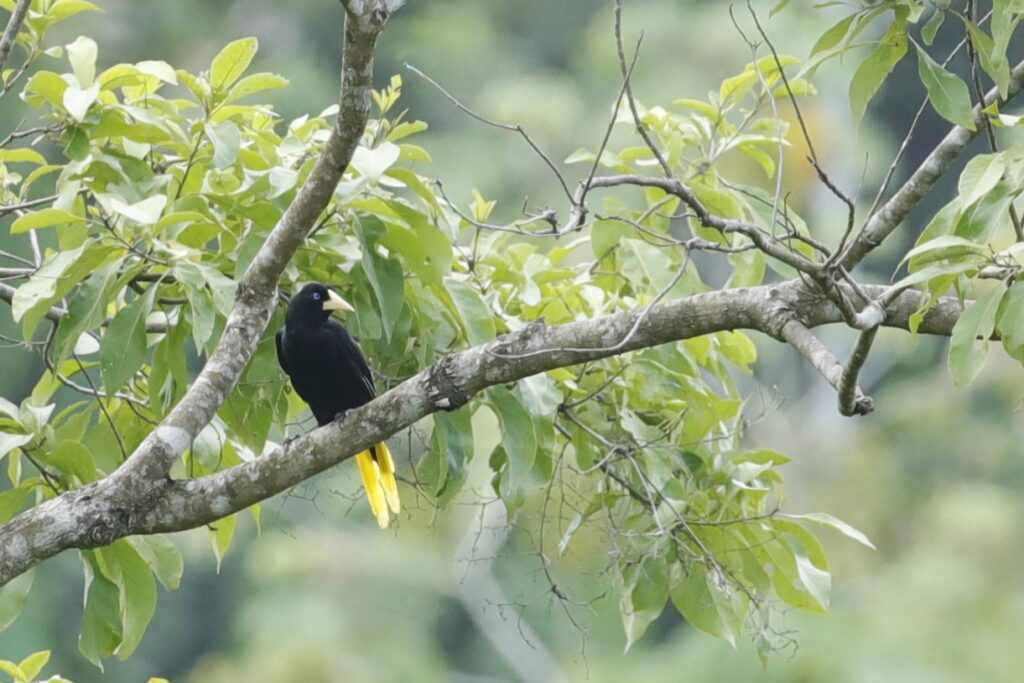

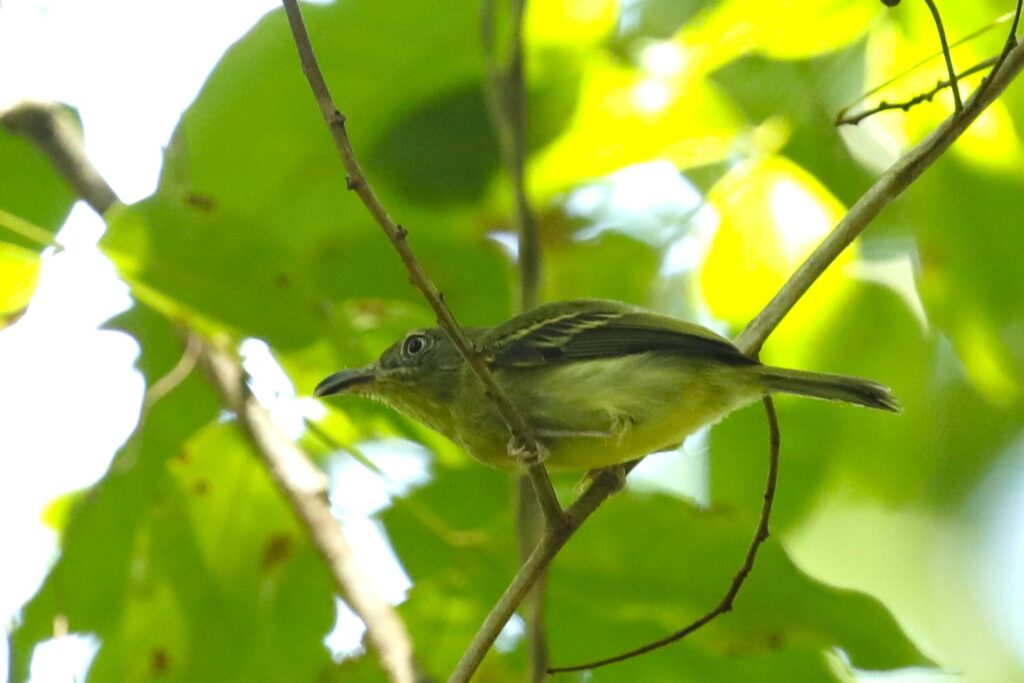
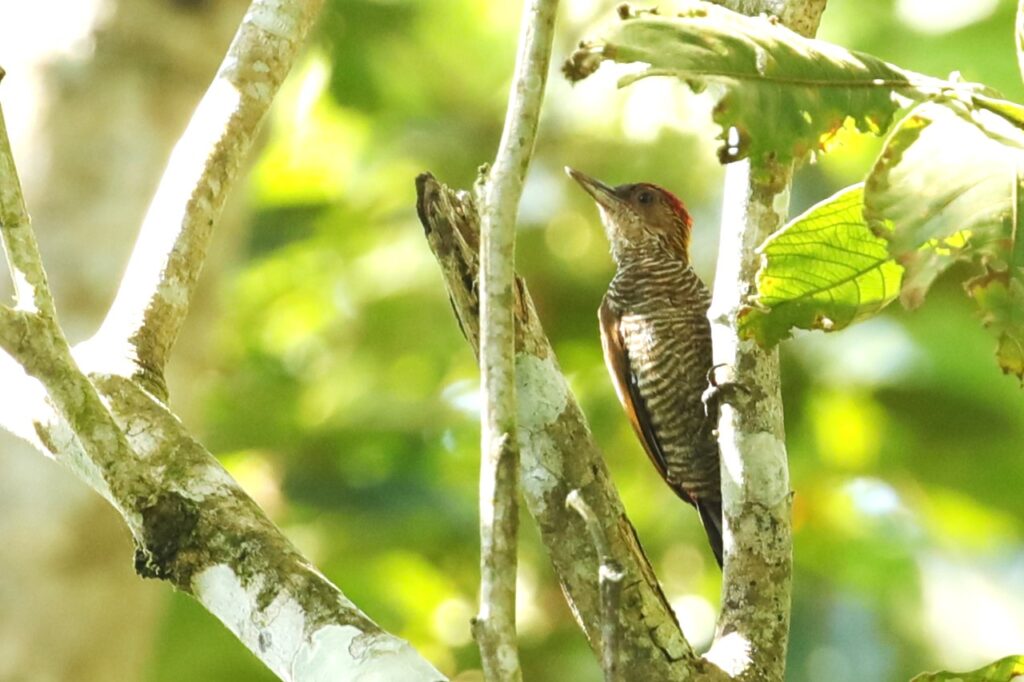

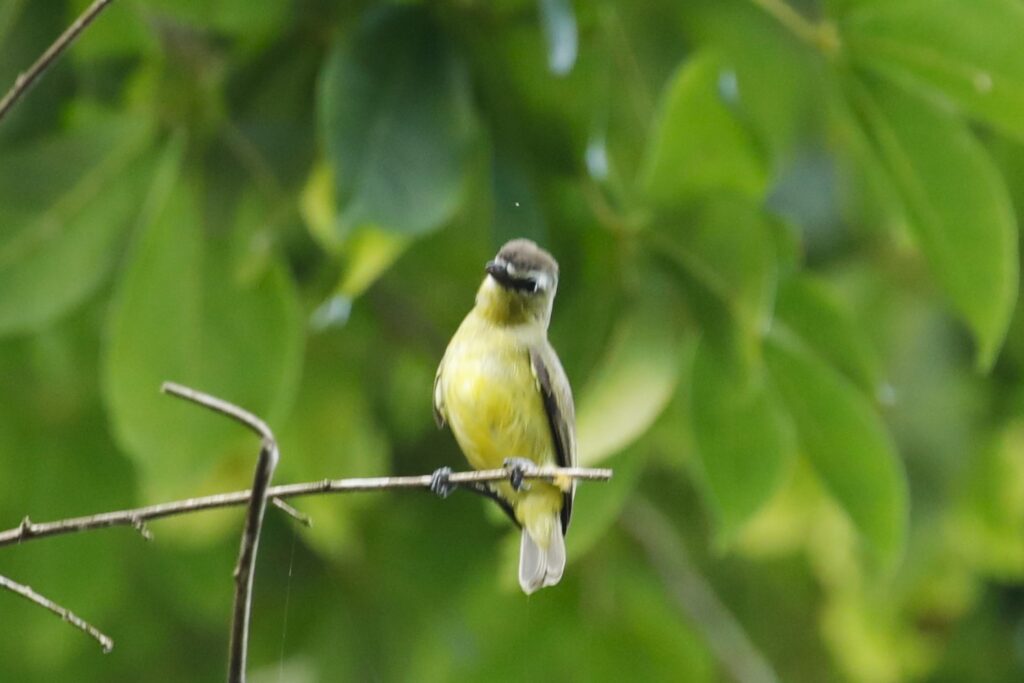
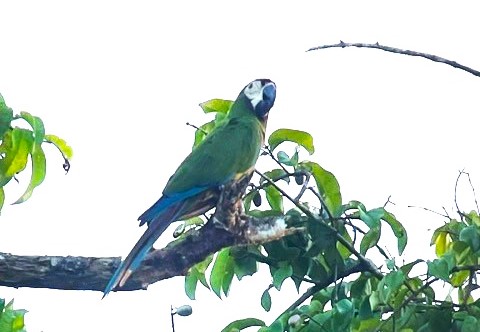



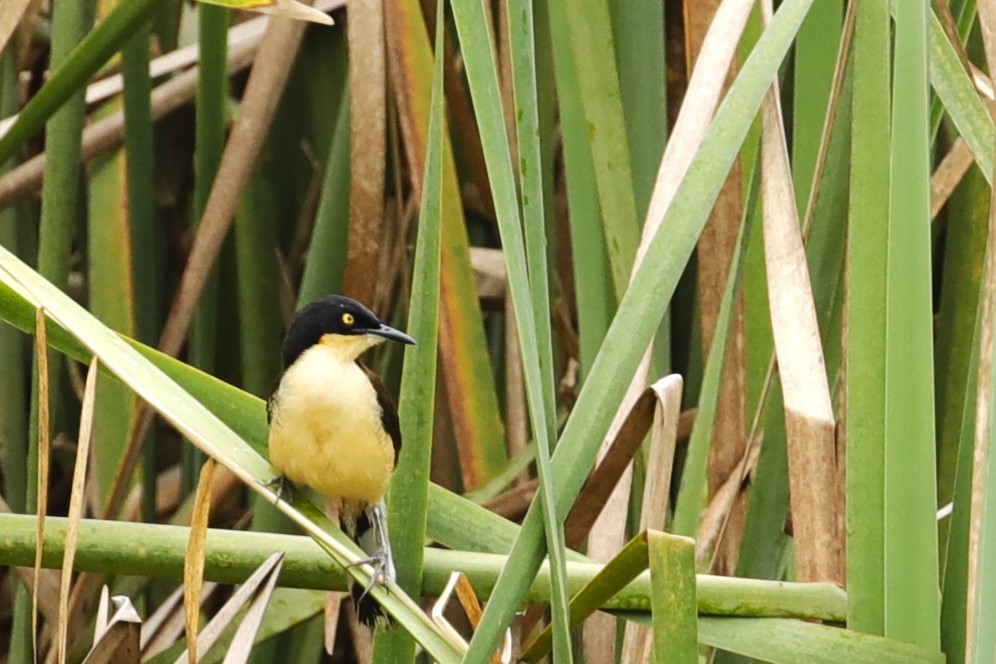
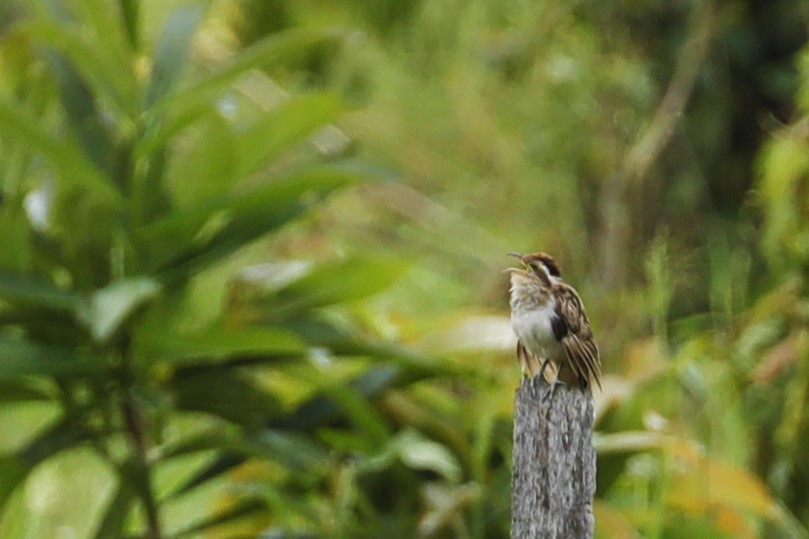
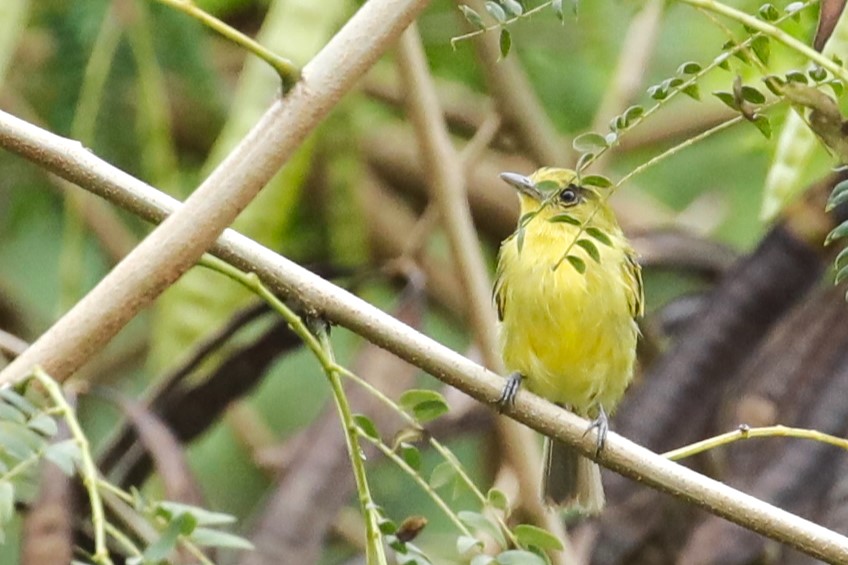
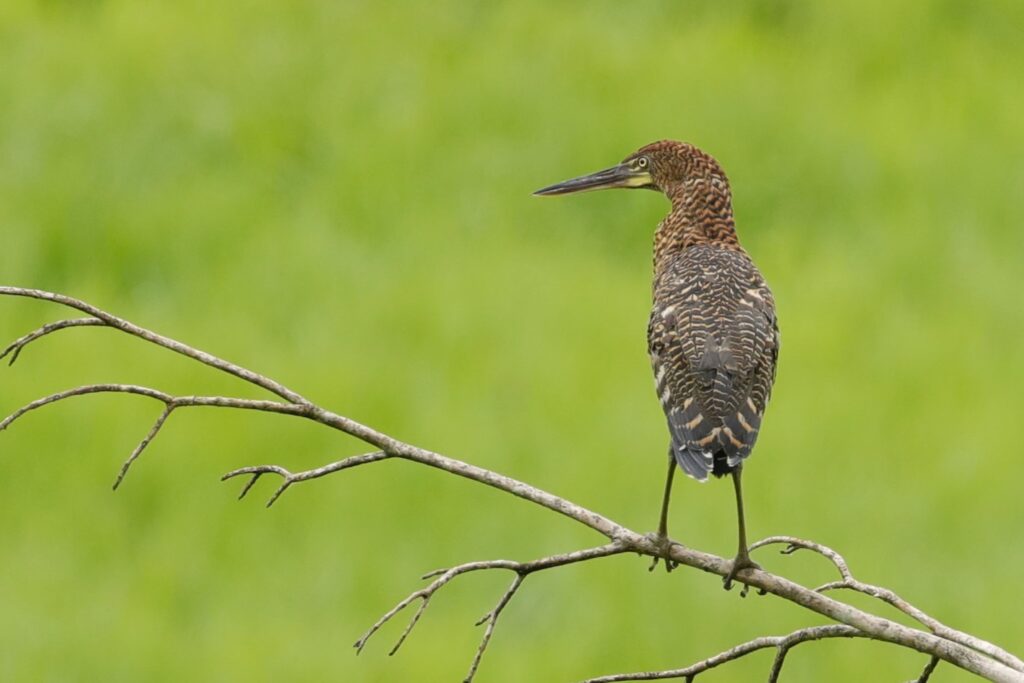
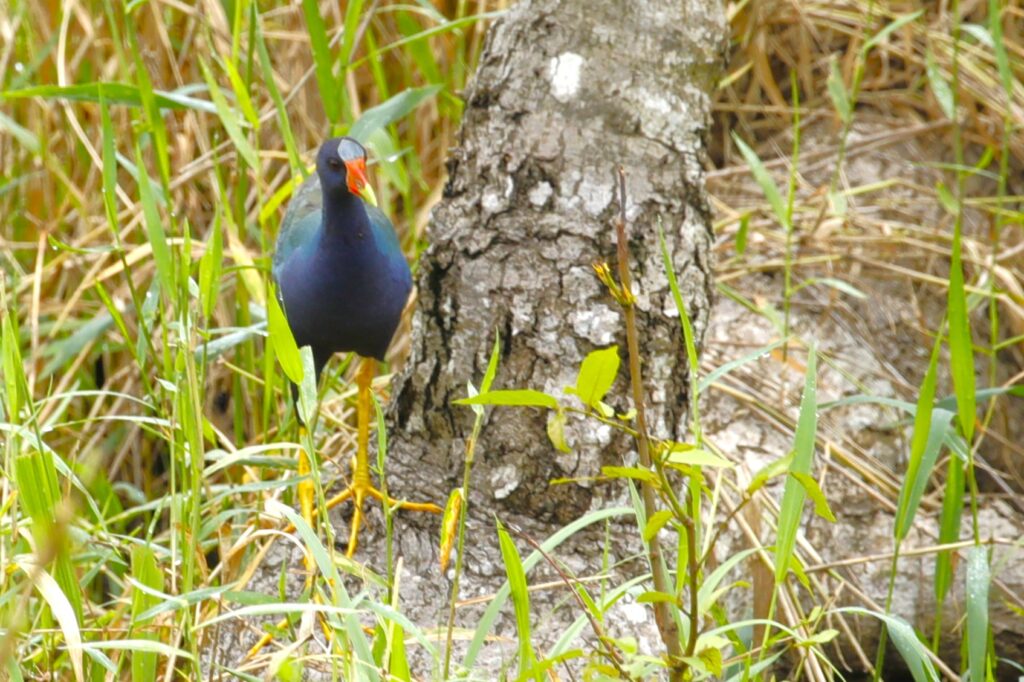
In Search of the Harpy Eagle
While every day was an incredible adventure, two trips stood out. Both involved getting in cayucas and heading deeper into the wild.
The trip to see the Harpy Eagle is a legendary part of the Canopy Camp experience. The day begins at 4am with wake-up and breakfast. Not even the hummers have started moving around the feeders. This was on day 4 of our package and was the first day that rain became an issue. At least we knew it was coming and were prepared. In the morning, I had to decide about my camera. I decided to bring it. This was too valuable an experience to not have the camera. I armed it with the protective rain sleeve and loaded it up.
We hopped in the van and drove about 25 km down to the end of the Panamerican highway at Yaviza. At the end of the highway we got out of our cozy and dry van and hopped into our cayuca to head down the Chucunaque River. The cayuca is like dugout canoe about 4’ wide and 40’ long. It was absolutely pouring. The cayuca did not have a top so naturally by the time we arrived at the indigenous village of El Real we were soaked. Did I mention that the rain was still coming down like ocelots and capybaras?
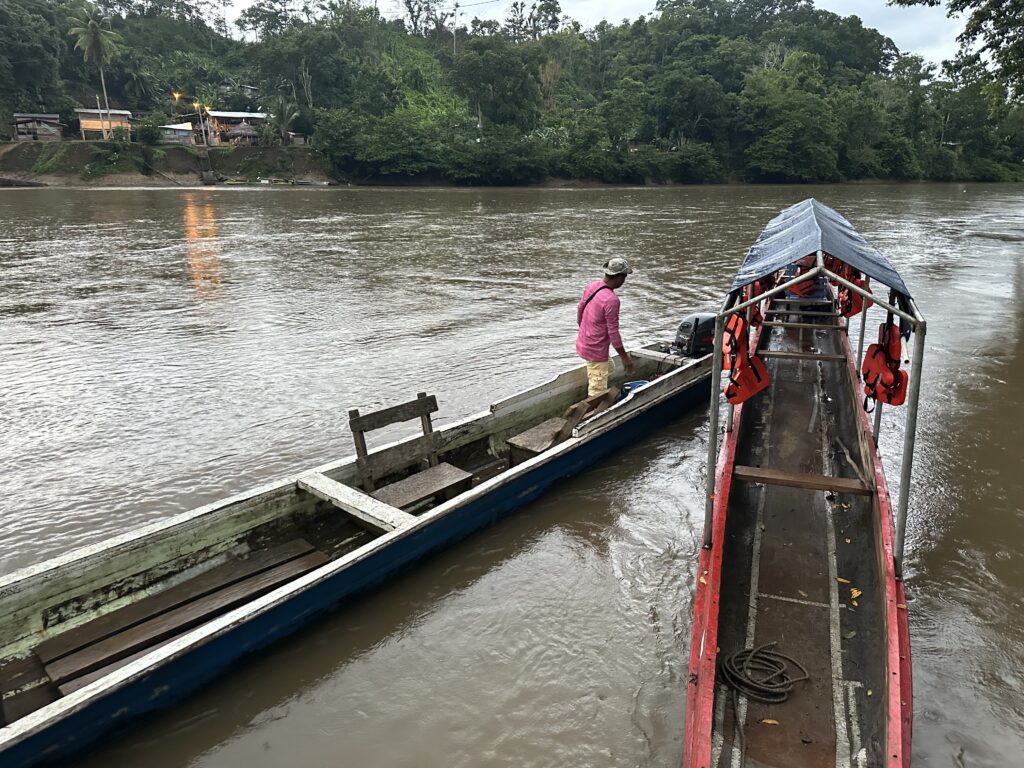

The next leg of the trip involved riding in the open back of a pick-up truck for another 20 minutes. At least I could get my camera in the cab of the truck. Nope, the rain did not stop yet.
The next leg of the journey was the hike. A long muddy trail of perhaps 2-3 km with some elevation change. No let-up yet on the rain. Still coming down like jaguarundis and agoutis. We are now on private land that is managed and controlled for the purpose of conservation and protection specifically of the Harpy Eagles, the national bird of Panamá. The caretaker of the land keeps a watch on nesting sites and guides groups, like ours, to where the birds are.

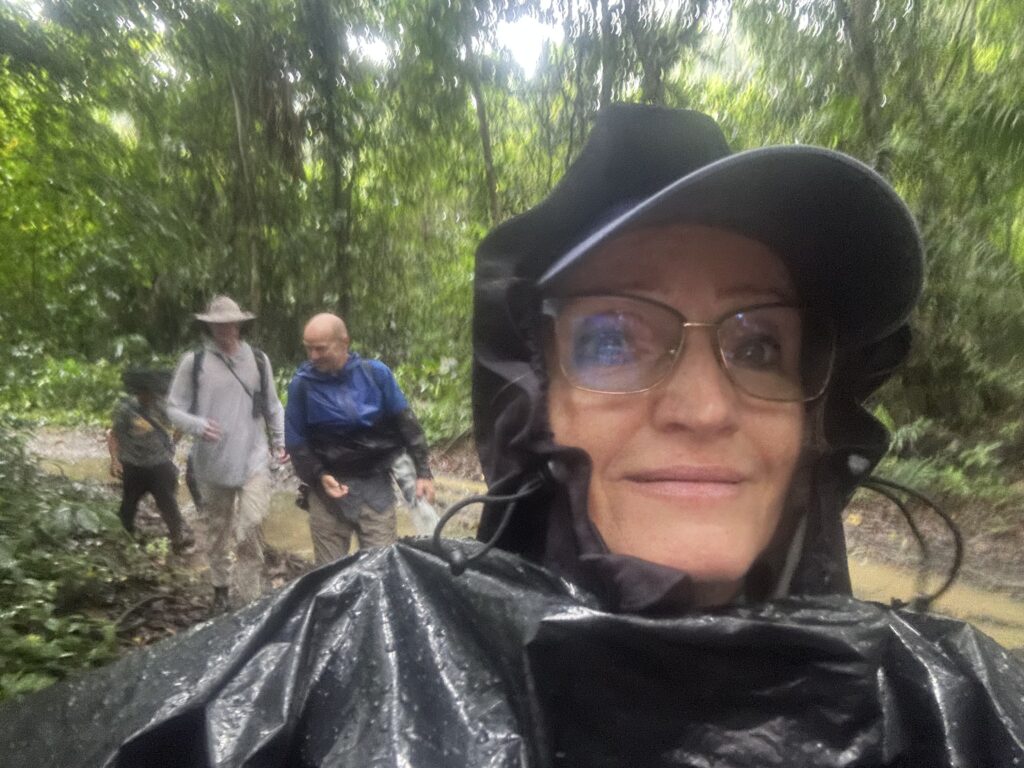
It’s a miracle! At the exact moment that we arrived at the location of the eagle; the rain stopped! Our eagle was a juvenile, fully developed in every way except still being spoiled by mom and dad. He will expect to be fed every 2 to 3 days by the parents until one day, they don’t come. Usually this is 12 to 18 months after fledging. I wonder how long he sits around and waits until he says, “Shit, I’m hungry. I guess I better go find a sloth to eat.”
The nest of this bird is massive! I am pretty sure there are apartments in Manhattan with less room.
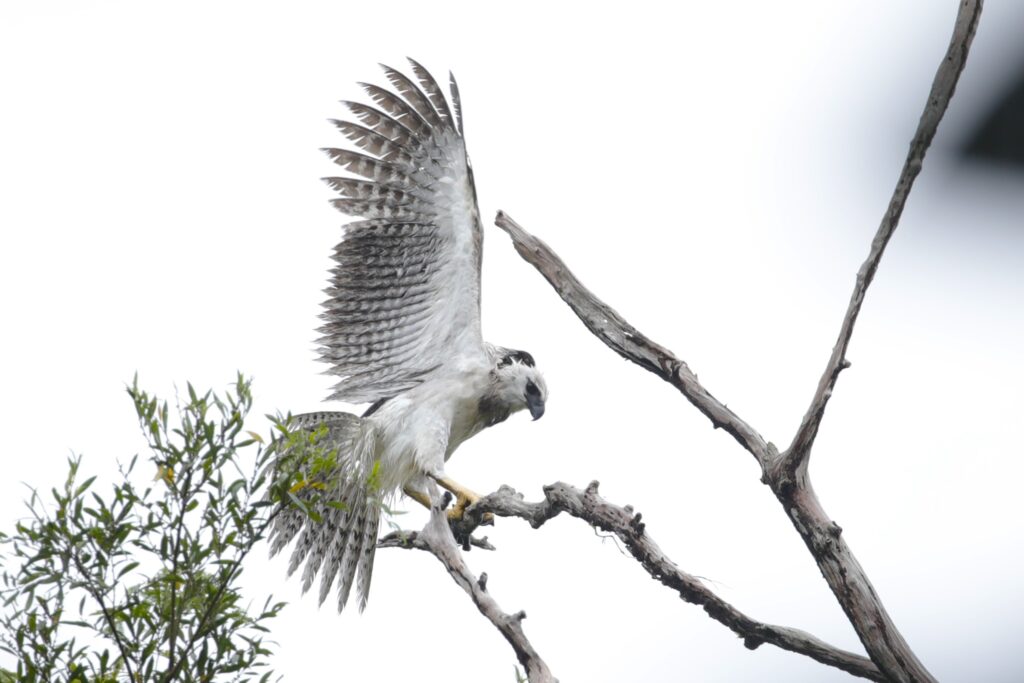
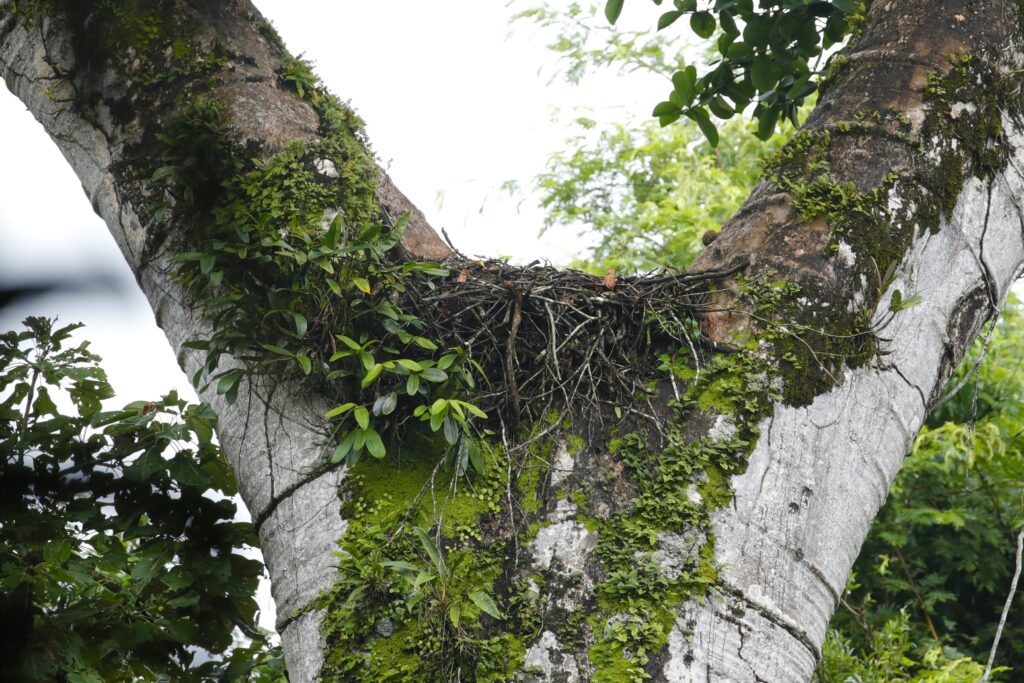
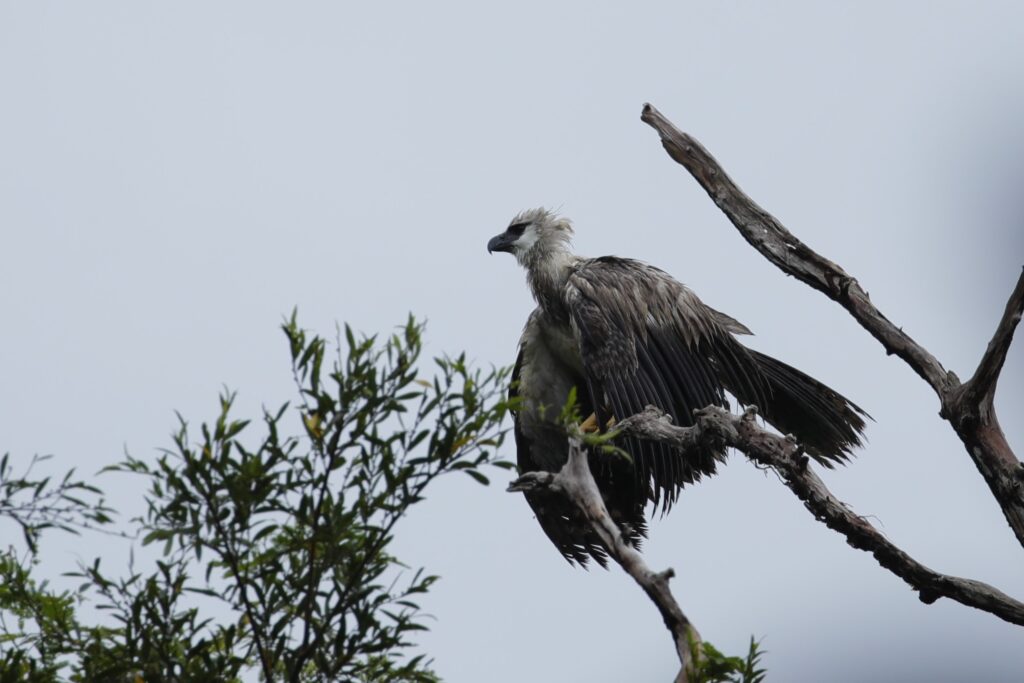
We ate our carry-along lunch in the jungle by a babbling stream.
Other key bird highlights for me on this trip was seeing the Fasciated Tiger Heron feeding in the stream (no photo, still pouring) and finally getting eyes on the mega-skulky Black-faced Antthrush, a bird with a repetitive call that is heard everywhere. Pearl Kite, Lesser Yellow-headed Vulture and Carib Grackle were also nice to see.
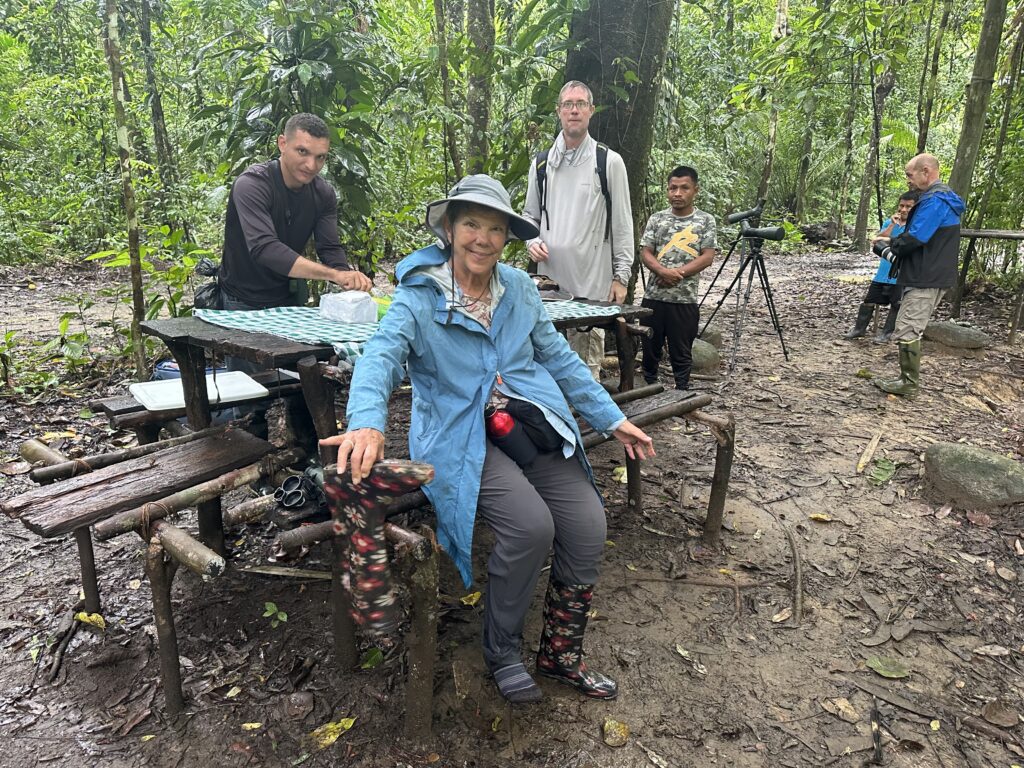
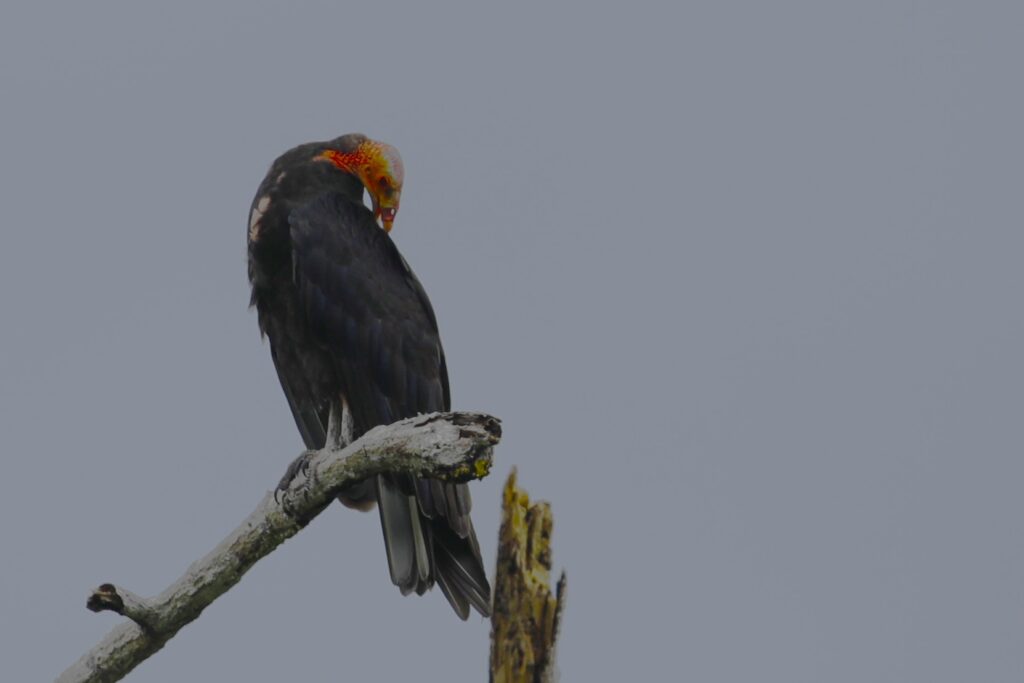
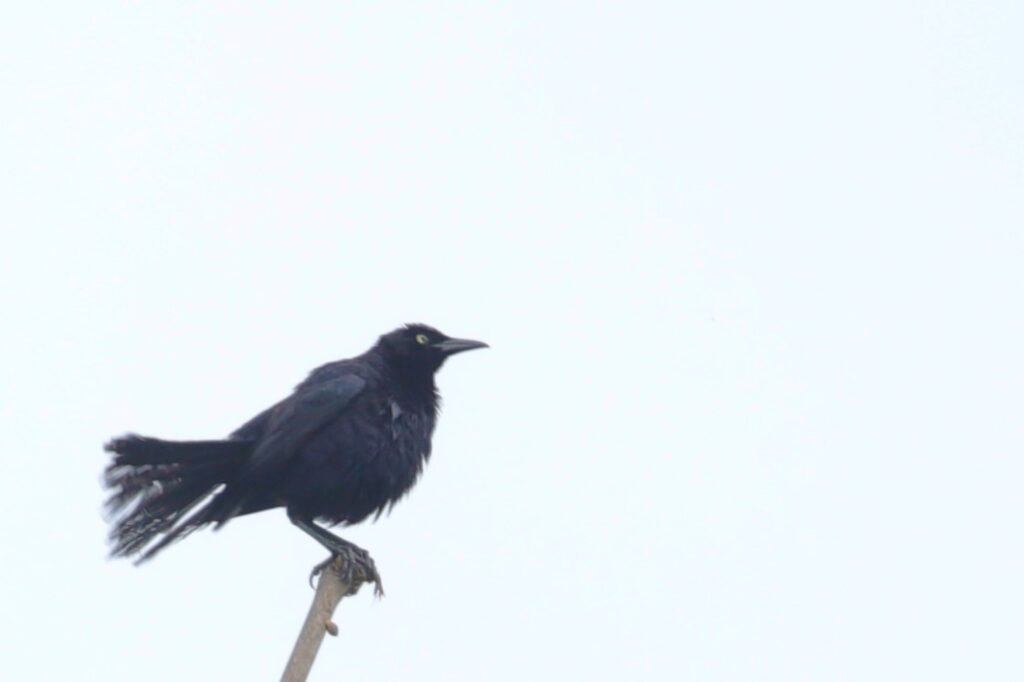

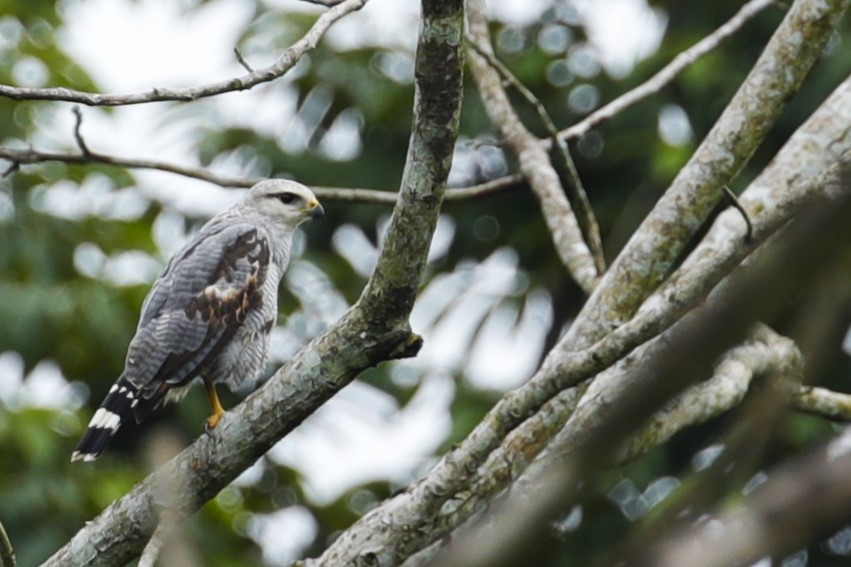
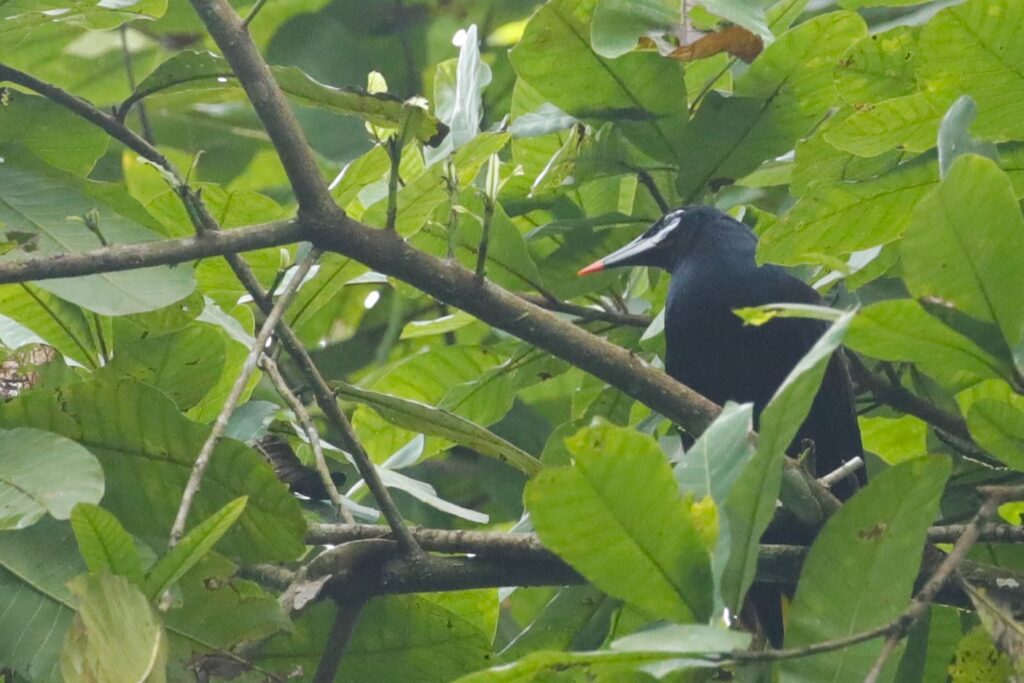
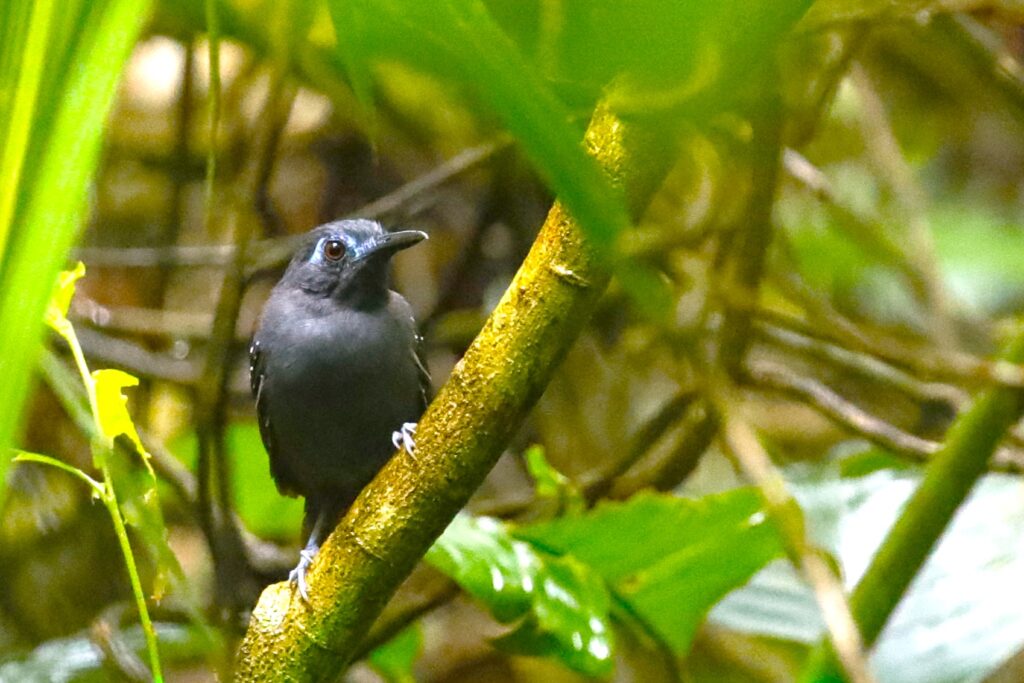
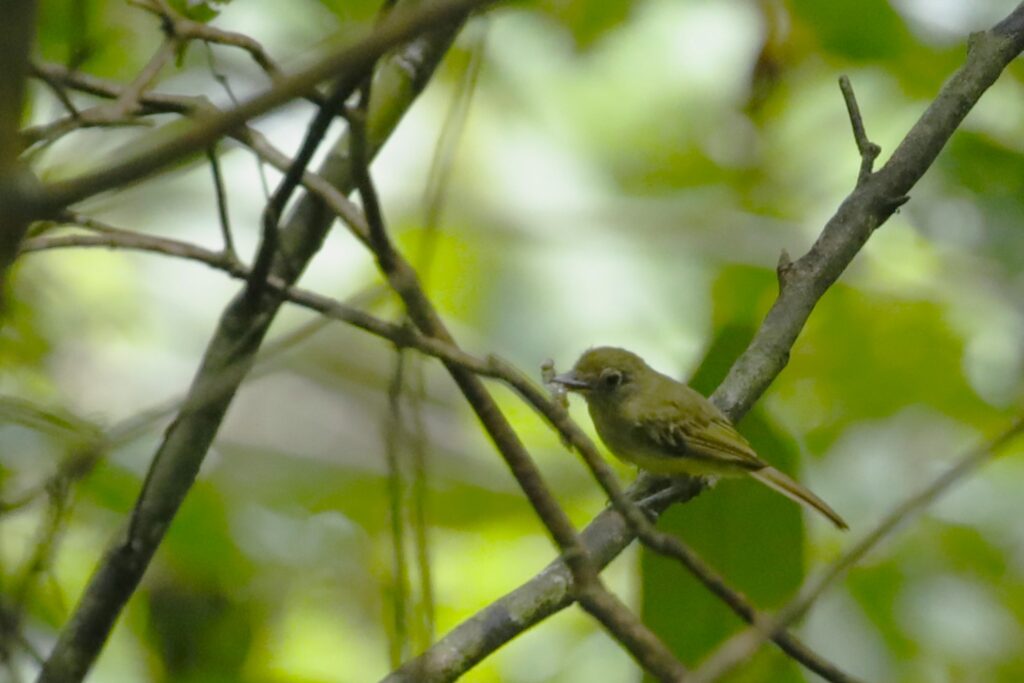
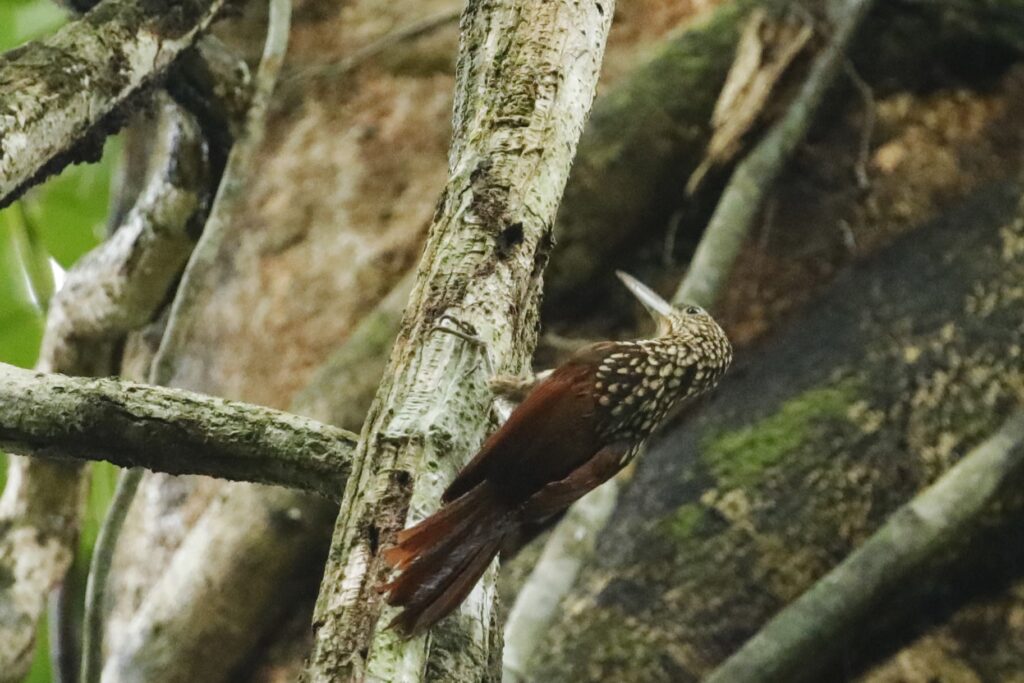
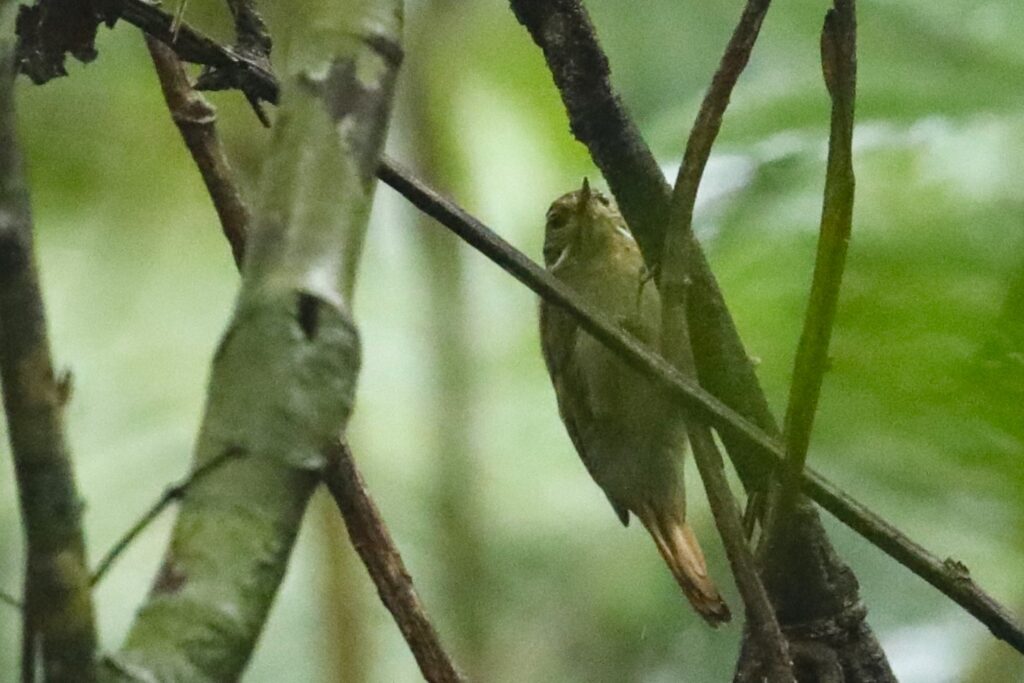
The return to the camp was much less exciting due to not getting rained on constantly.
We were able to do some drive-by birding in the cayuca. Some lovely shots of Cocoi Heron, Black-collared Hawk and Wood Stork were taken. The camera survived and so did I and everyone else. What a great day! It was a two-beer evening.
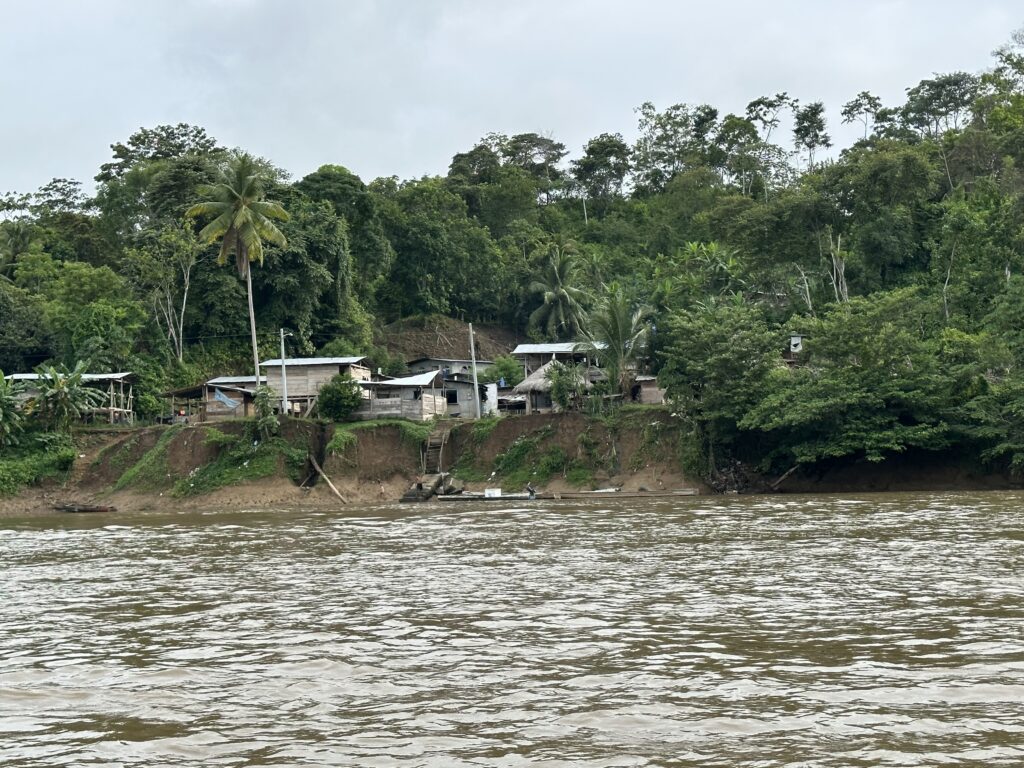


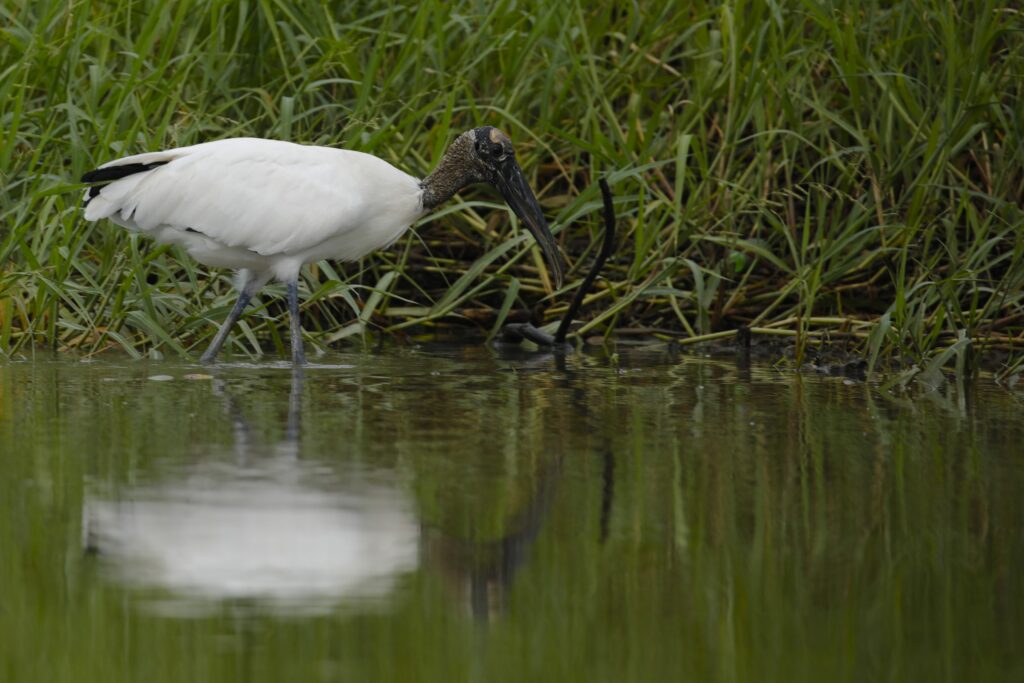
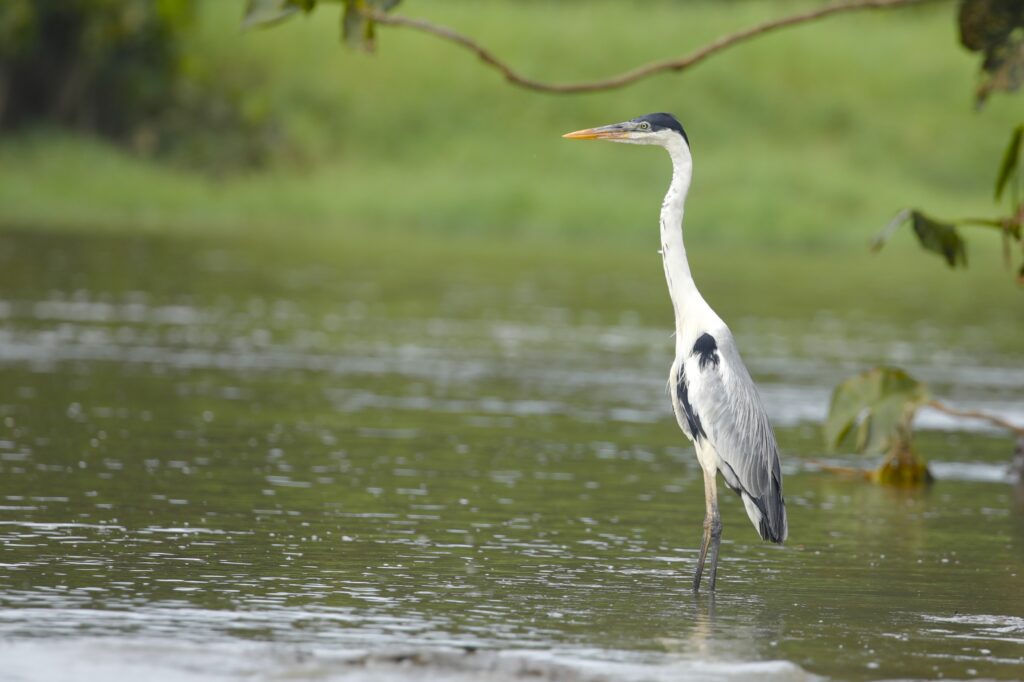
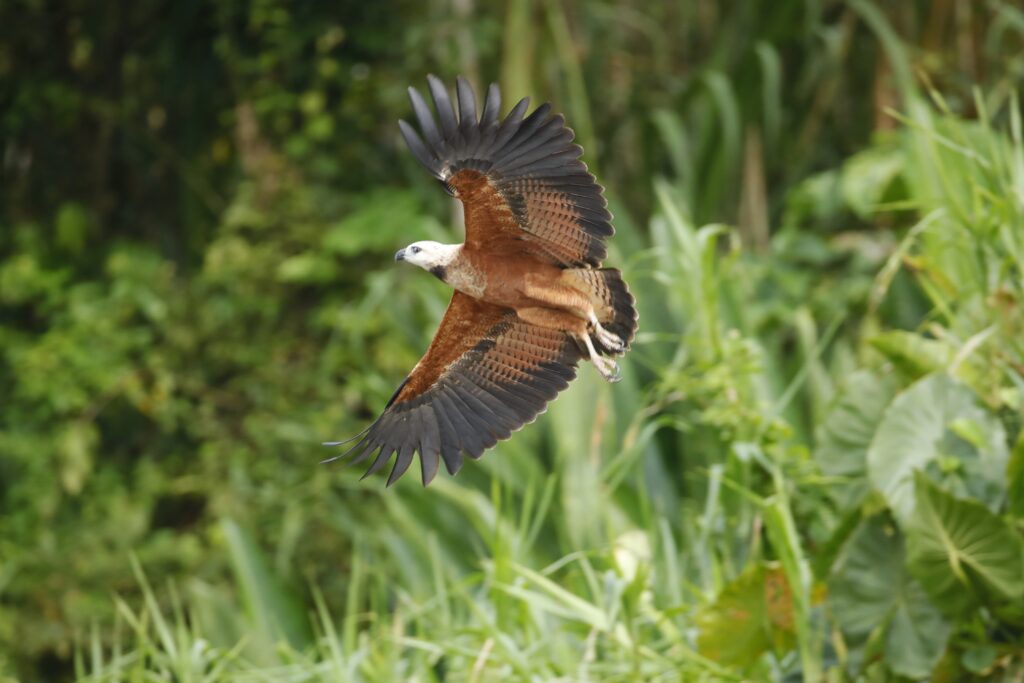
The Kingfisher Trip
The objective of the second boat trip was to head to a resaca, or you may know it as an oxbow. It is an old path of the river that is now isolated from the flow because the river changed course. The target birds, kingfishers, or in Spanish, martín pescadors.
On this trip we would get on the boat at a different location farther upstream in the Chucunaque River from the Harpy Eagle day and head upriver taking a right turn at the Rio Turquesa and into an area known as the Emberá-Wounaan Comarca, indigenous territory.
The other facet of this trip was made clear to us. We were going to see the stream of migrants flooding across the Columbia/Panamá border. And boy did we ever. But first the birding.
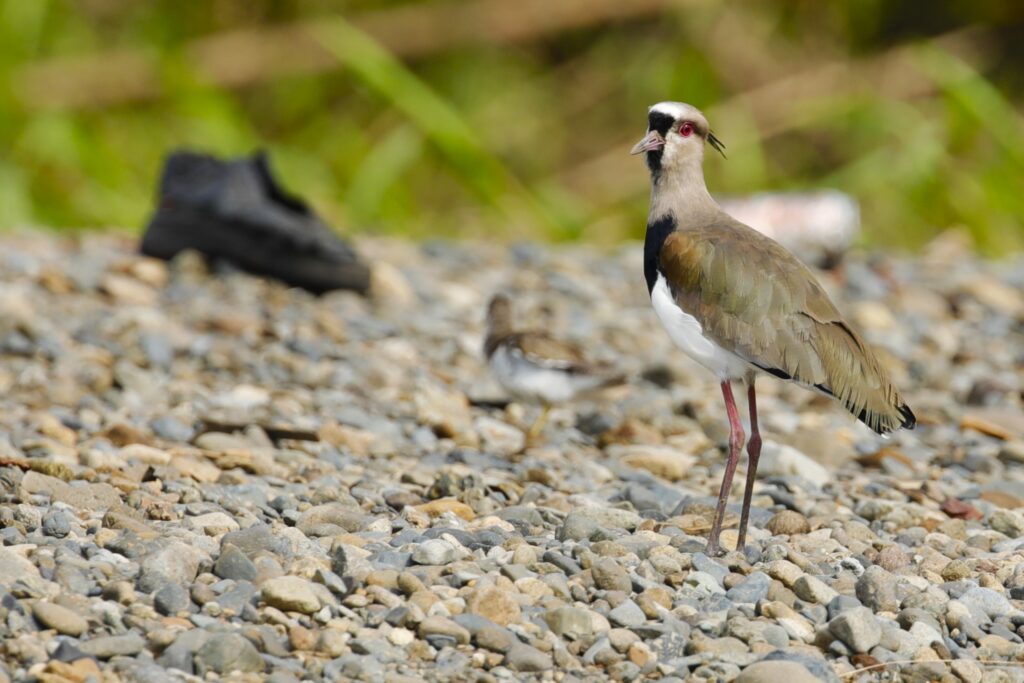
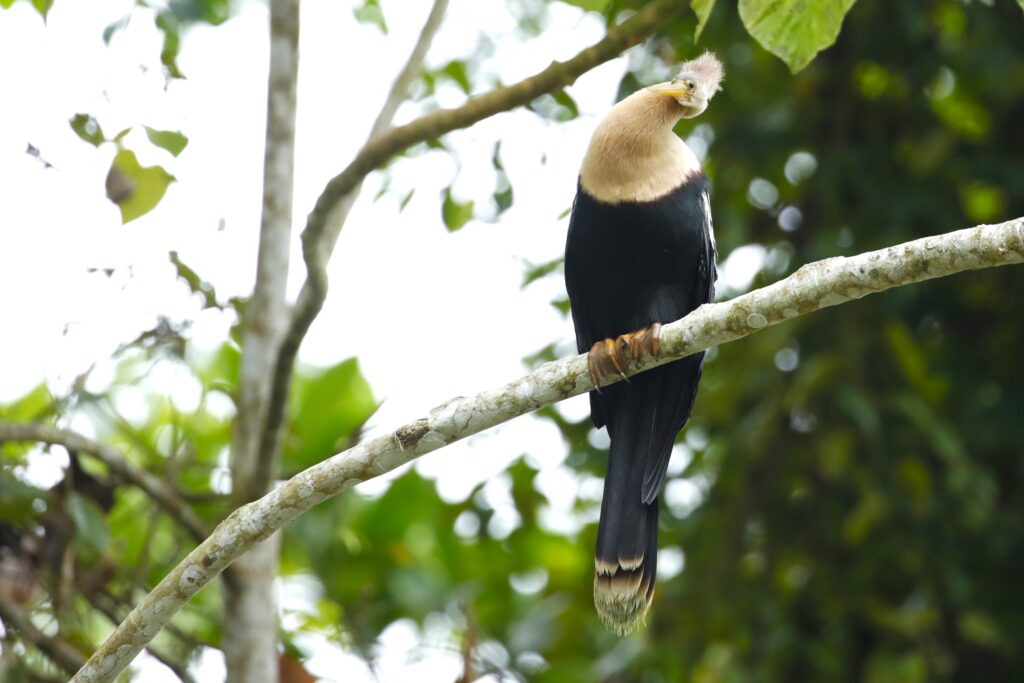
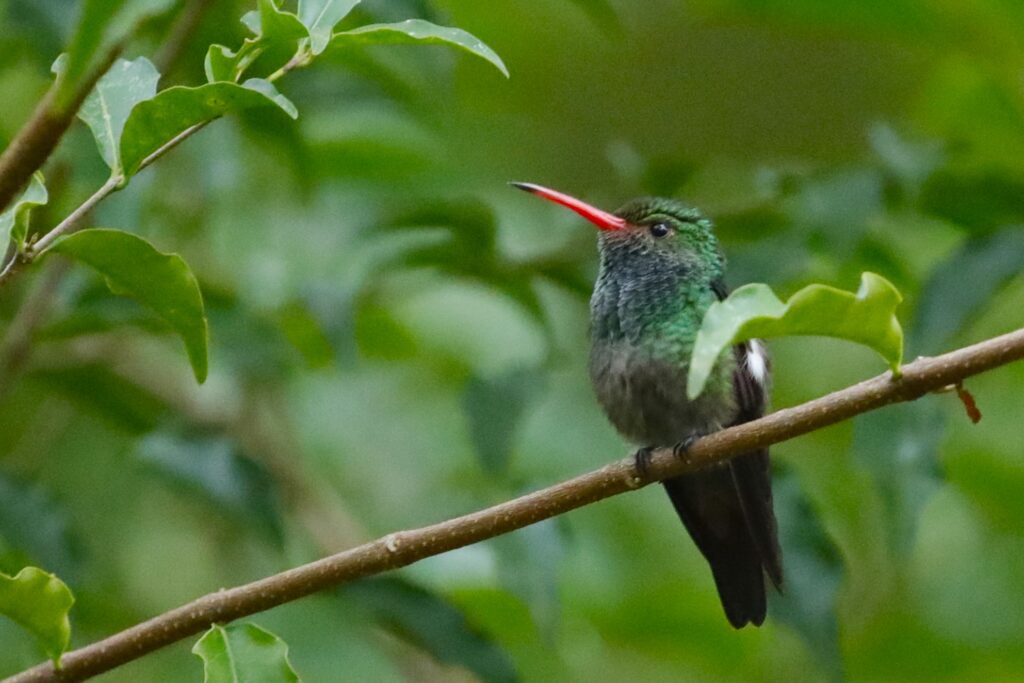
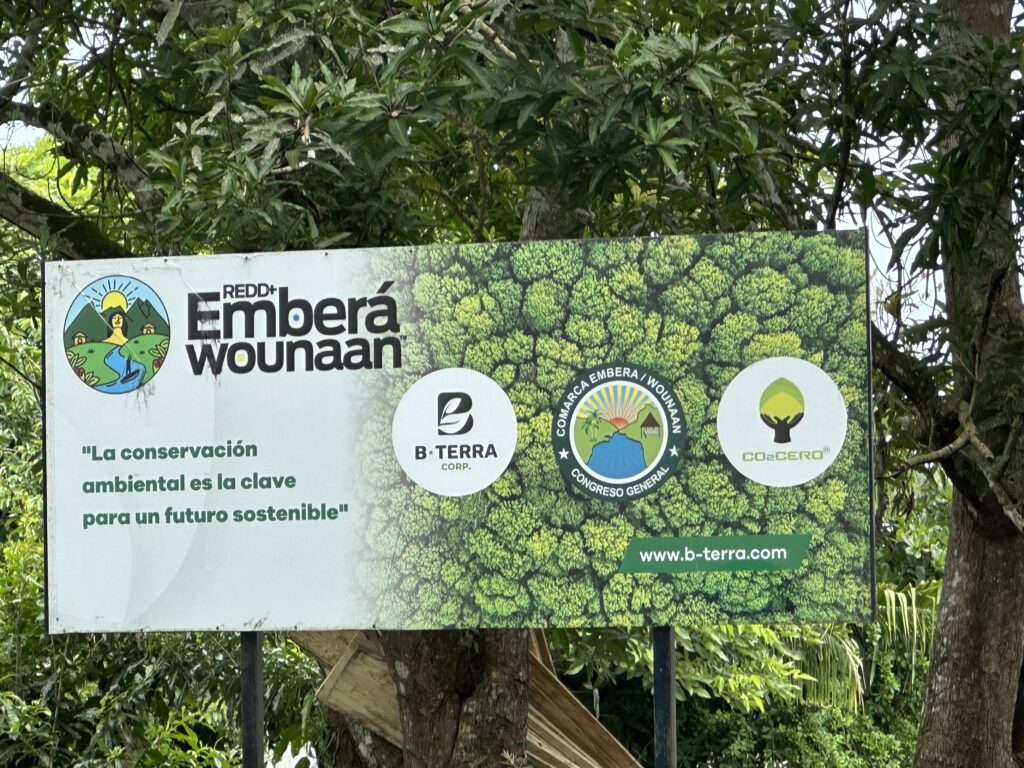
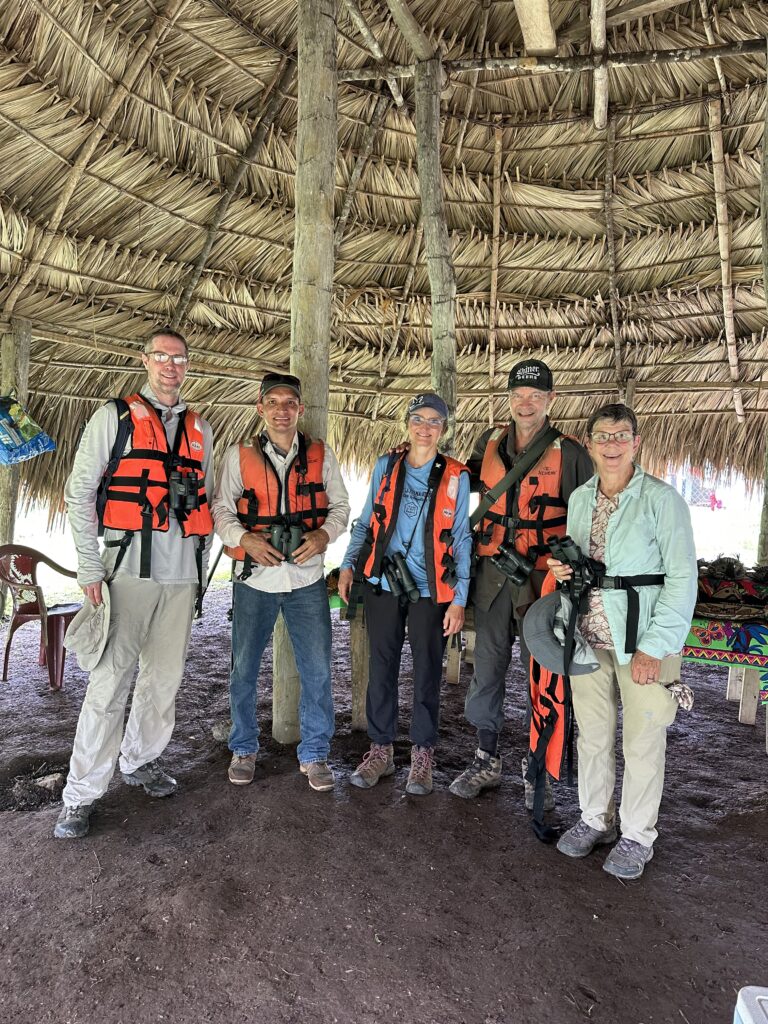

The trip up the river was beautiful. We made a brief stop and marched ashore in search of Dusky-backed Jacomars. Found them! Also saw Red-rumped Woodpeckers, Yellow-crowned Tyrannulets and others. Also some nice looks at Neotropic Cormorants, Anhinga and Southern Lapwings after resuming the river ride. We arrived at the Emberá village to quite a spectacle. We had our packed lunch under a thatch roofed hut and examined some of the Emberá craftsmanship for basket and plate making that is well know by collectors of such things.
After lunch we marched off to the resaca. I think Oscar was calling it a lagoon habitat. It did not take long before I was photographing four different kingfisher species. American Pygmy, Amazon, Rufous-and-Green and the big boy, Ringed.
We also had great looks at Rufous Motmot, Greater Ani, Boat-billed Heron (what a strange looking bird) and Gray-cheeked Nunlet.
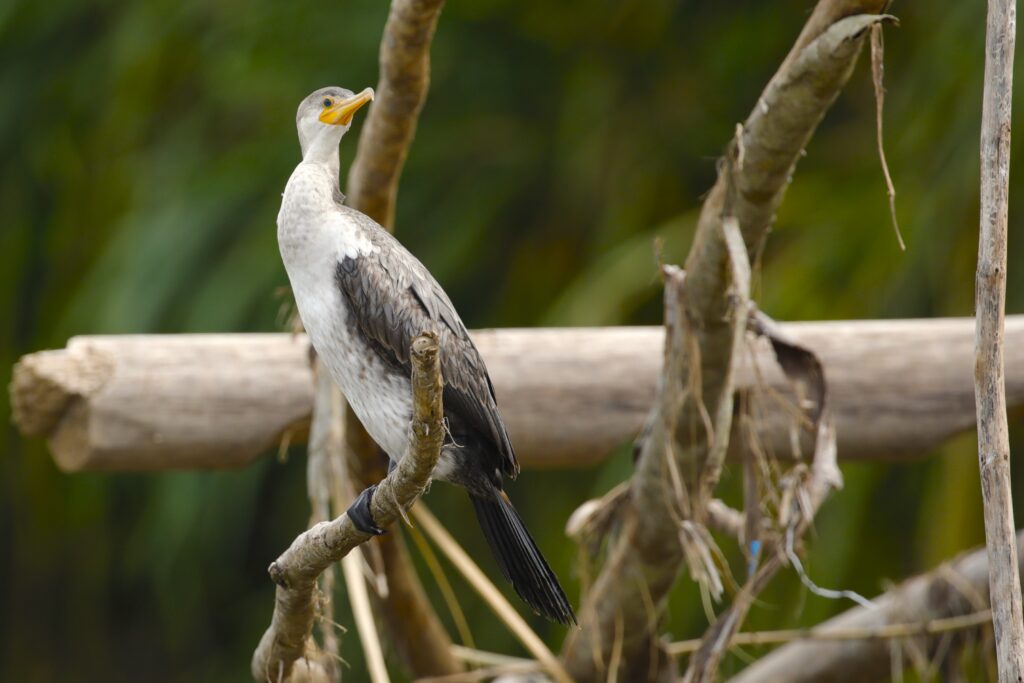
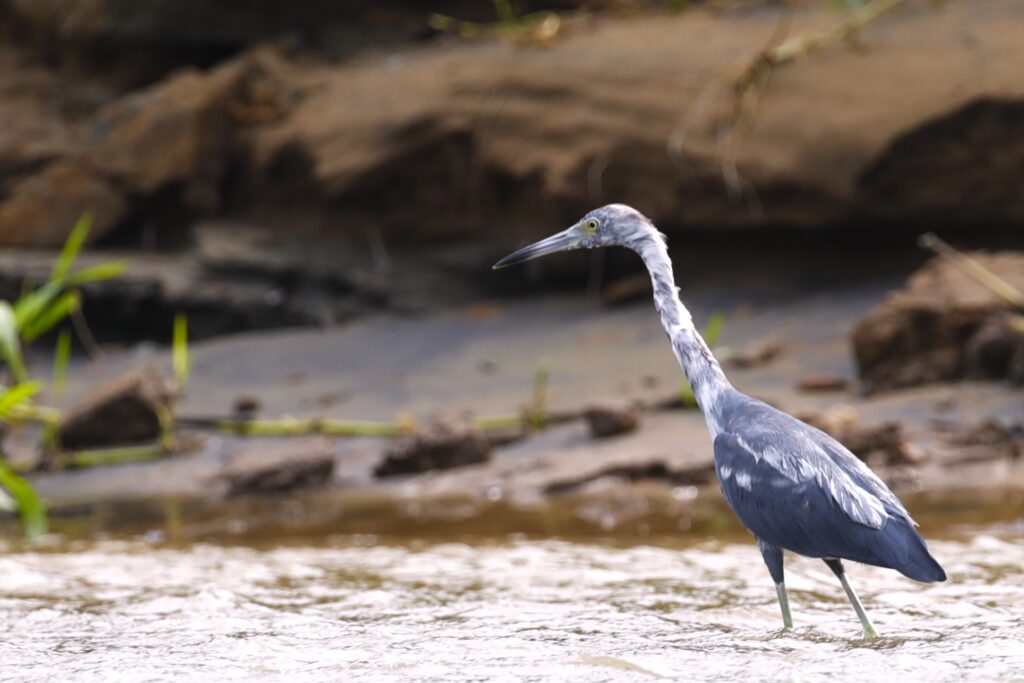

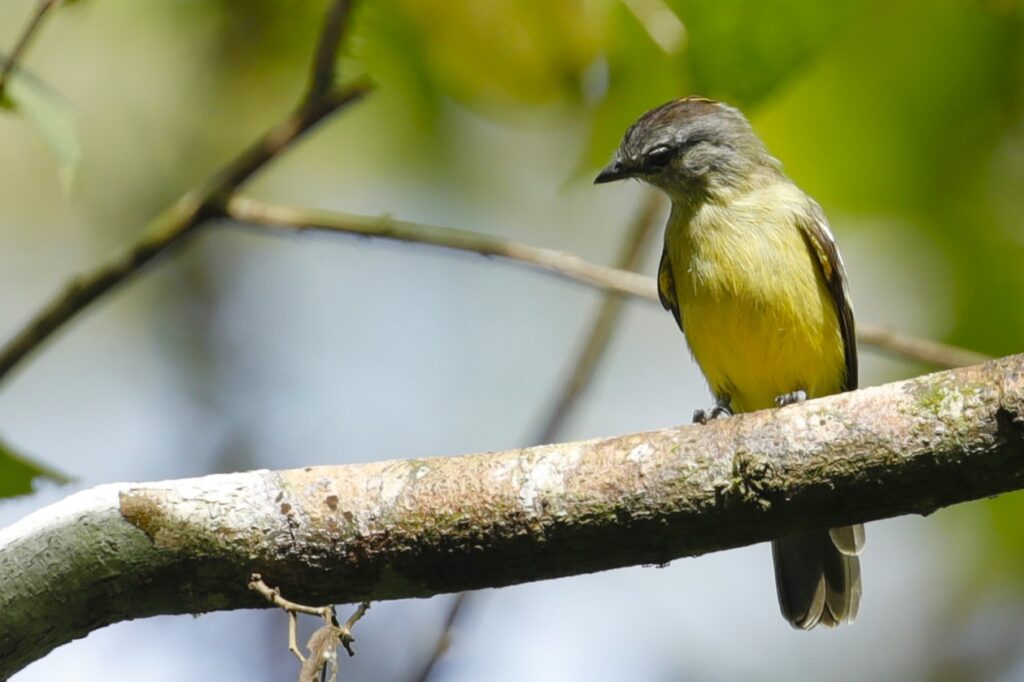
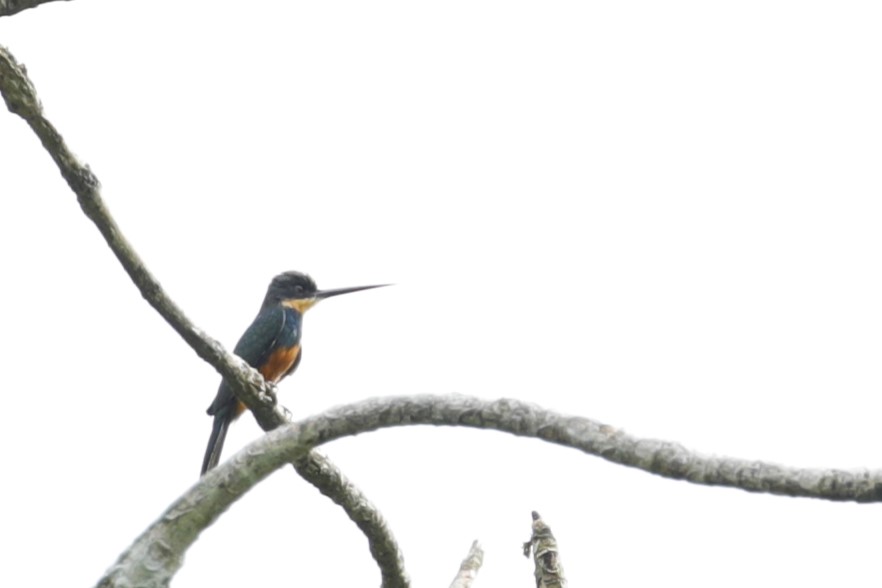
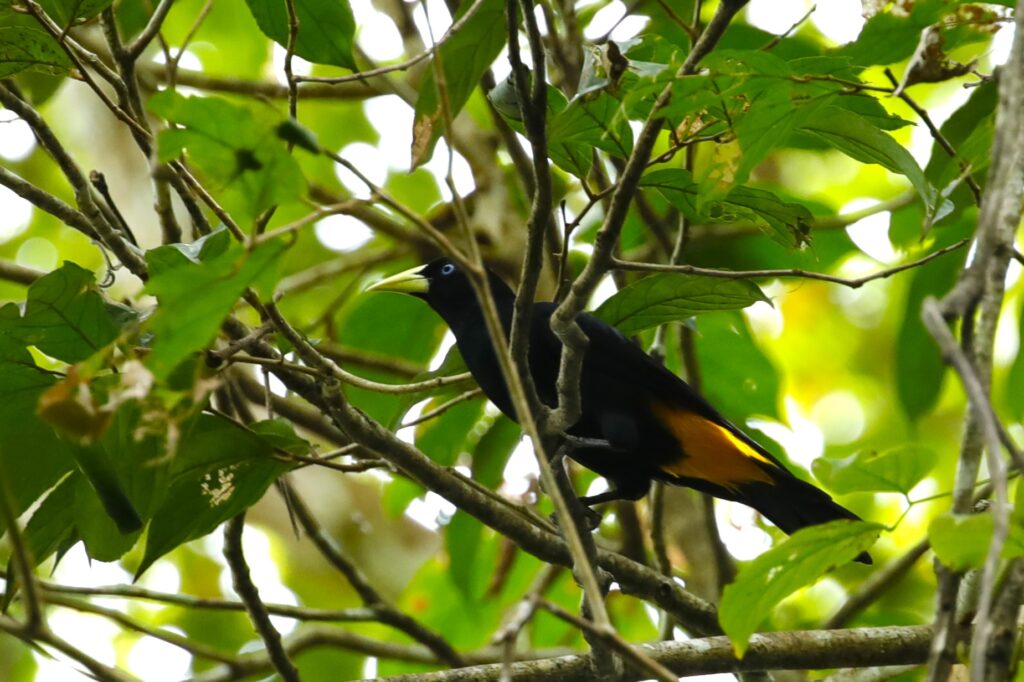
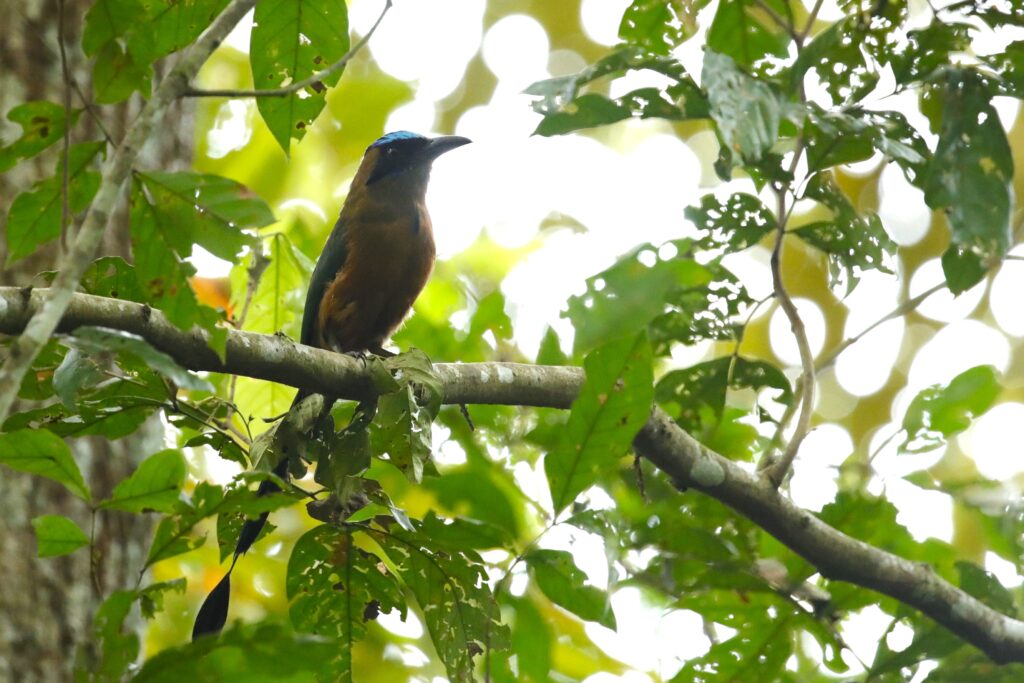
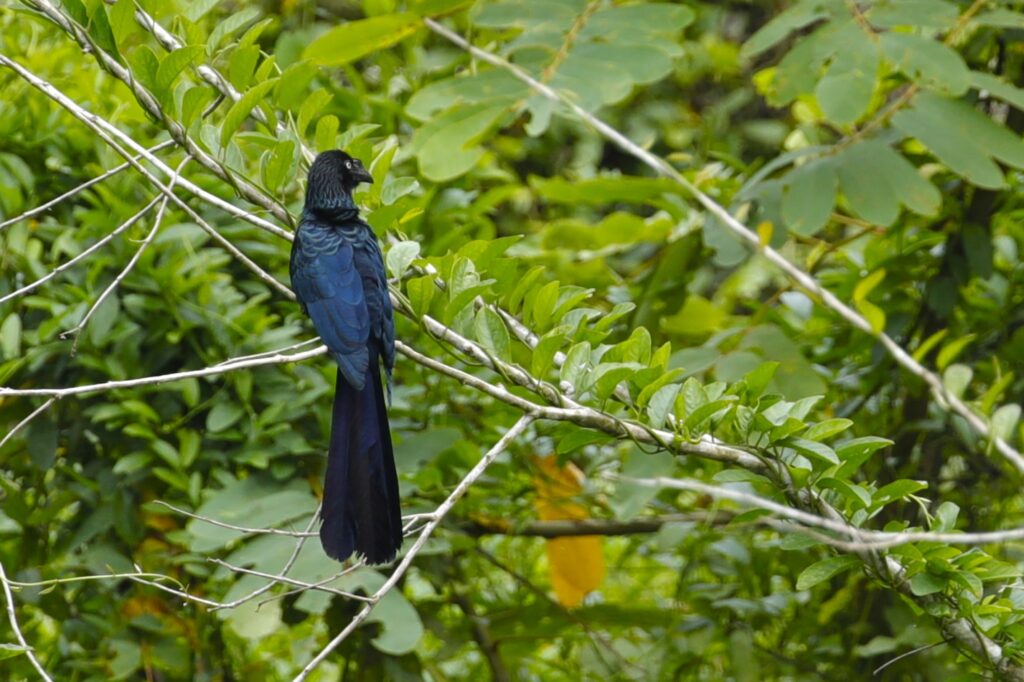
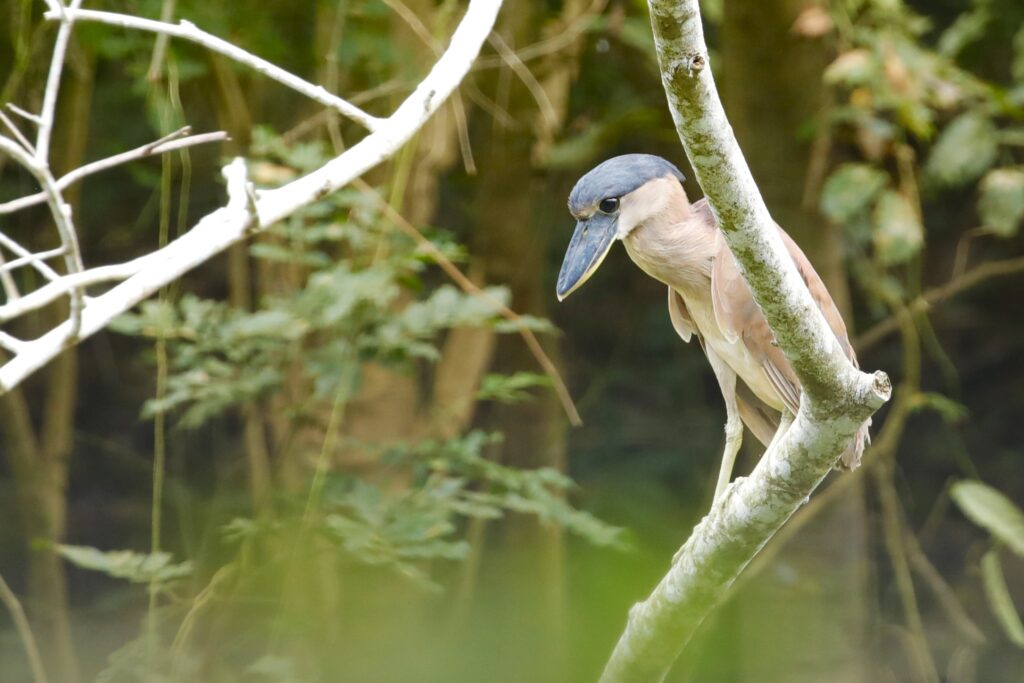

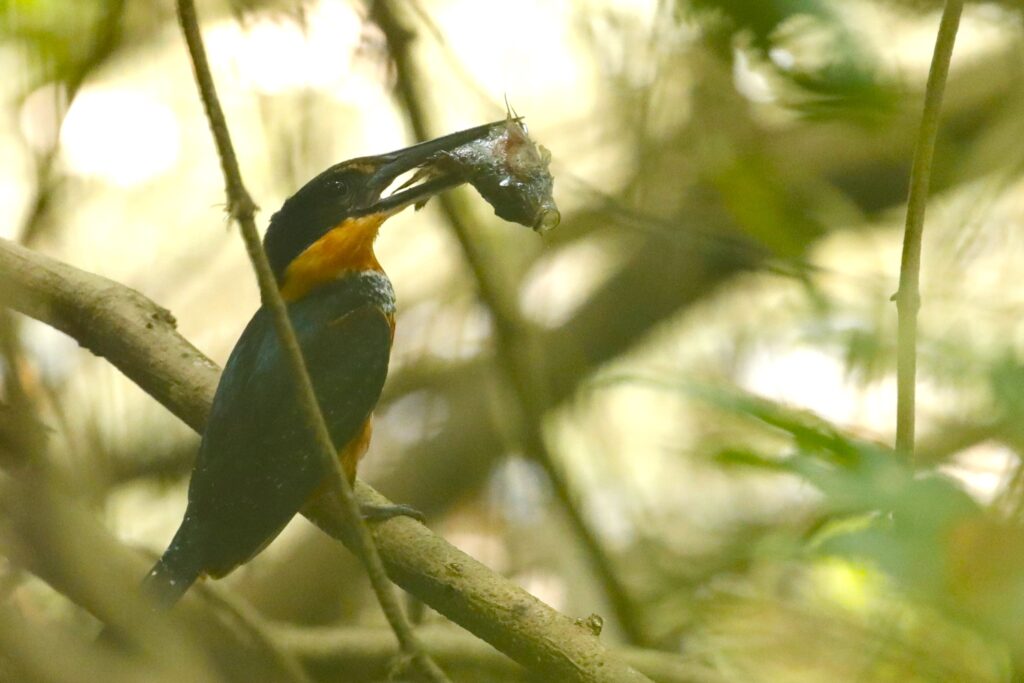

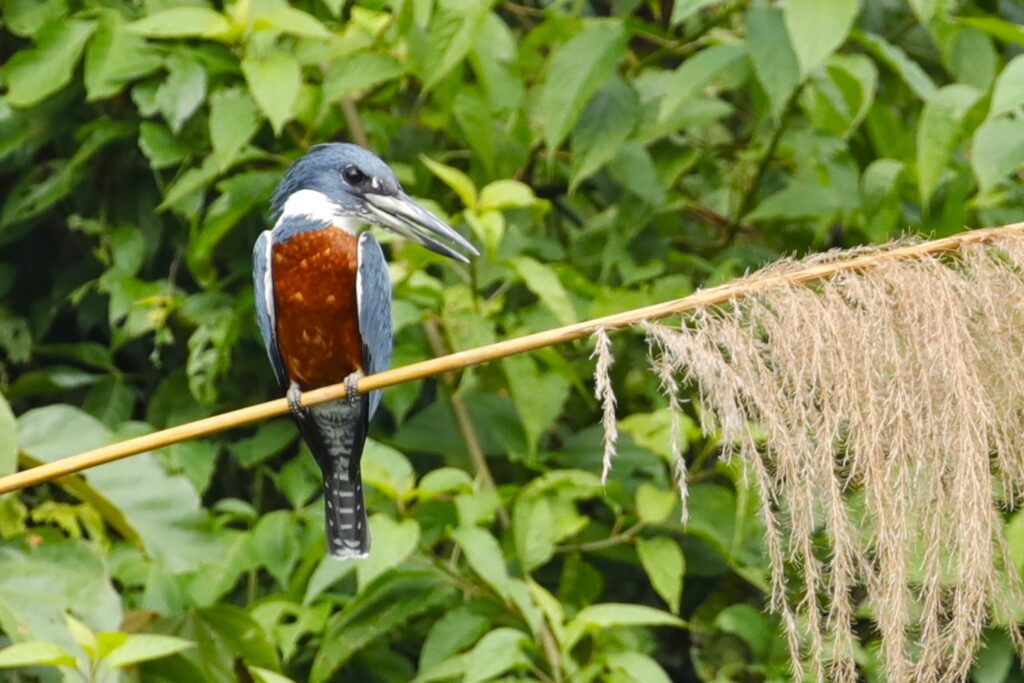
Migrant Crisis?
I don’t know if what we saw in terms of the migrants was a normal day but based on what I could gather, it was. Upon arriving at the boarding location, it was clear there was some kind of big operation going on. There was a couple of pick-up trucks belonging to Doctor’s without Borders. There was a large bus standing by. There were other cayucas loaded with food and other supplies.
Shortly after heading upriver, we saw our first cayuca full of migrants (perhaps 20 or so per cayuca). All were wearing bright-orange lifejackets and looking like normal people out for a boat ride. We saw many of these boats while heading up the river.
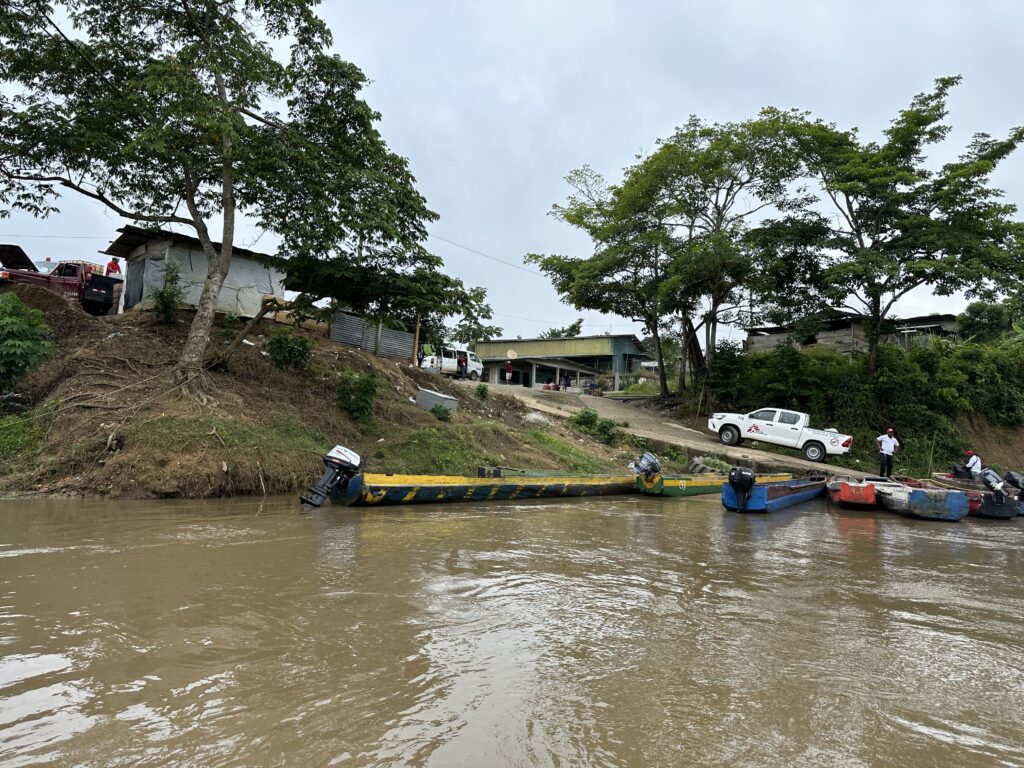
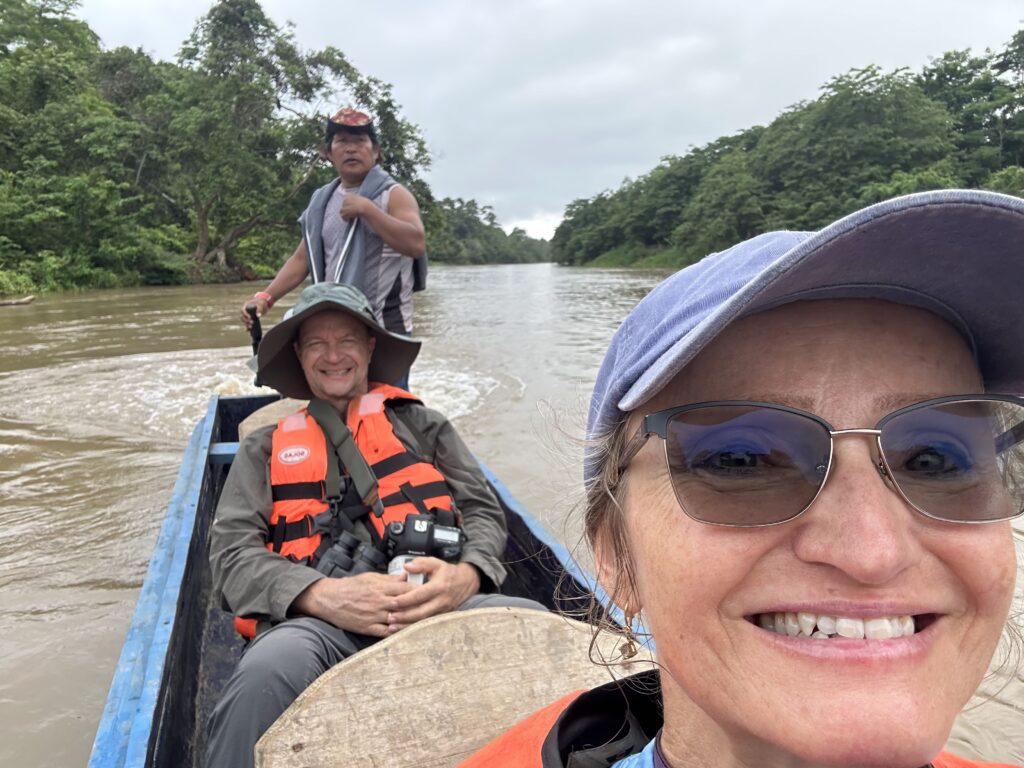

When we arrived at Nueva Vigía Emberá, the sight was nothing short of shocking. We needed to queue up to land the boat on the shore and exit the boat amongst hundreds of migrants waiting for their turn to get on the cayuca and continue the journey to the land of the free.
I give Brett credit for having the gumption to ask one where he was from (Venezuela) and where he was going (United States) and why not just stay in Panamá where the economy is not that bad and no more risk to take. Let’s just say that anything other than the United States is not an option.

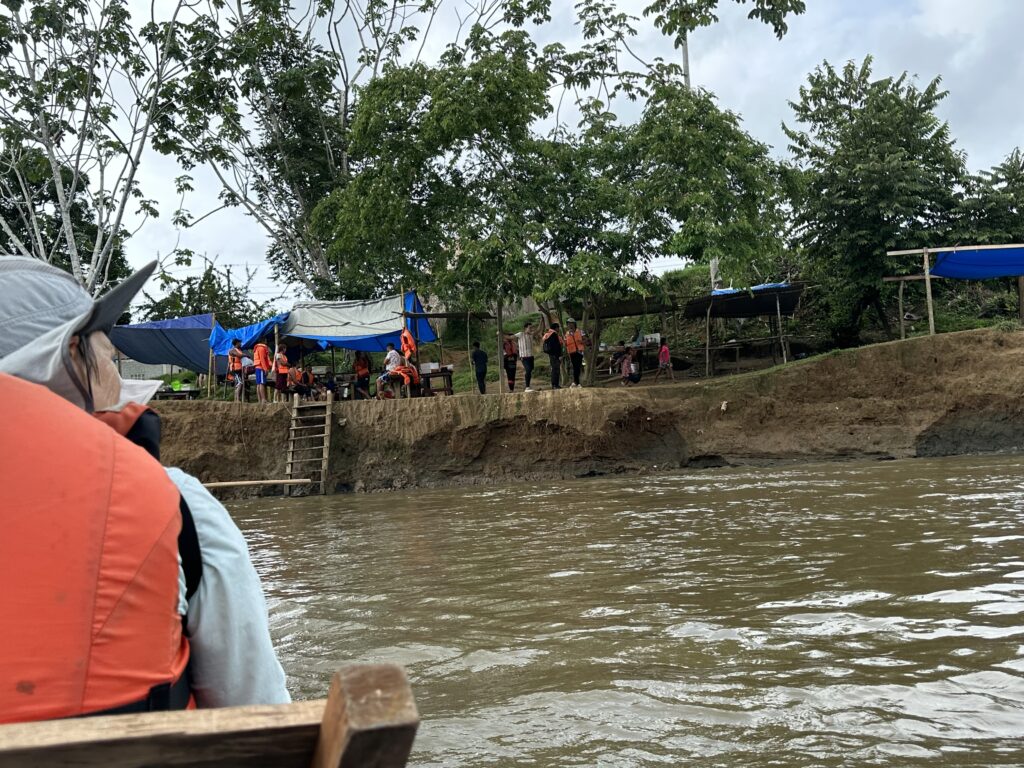
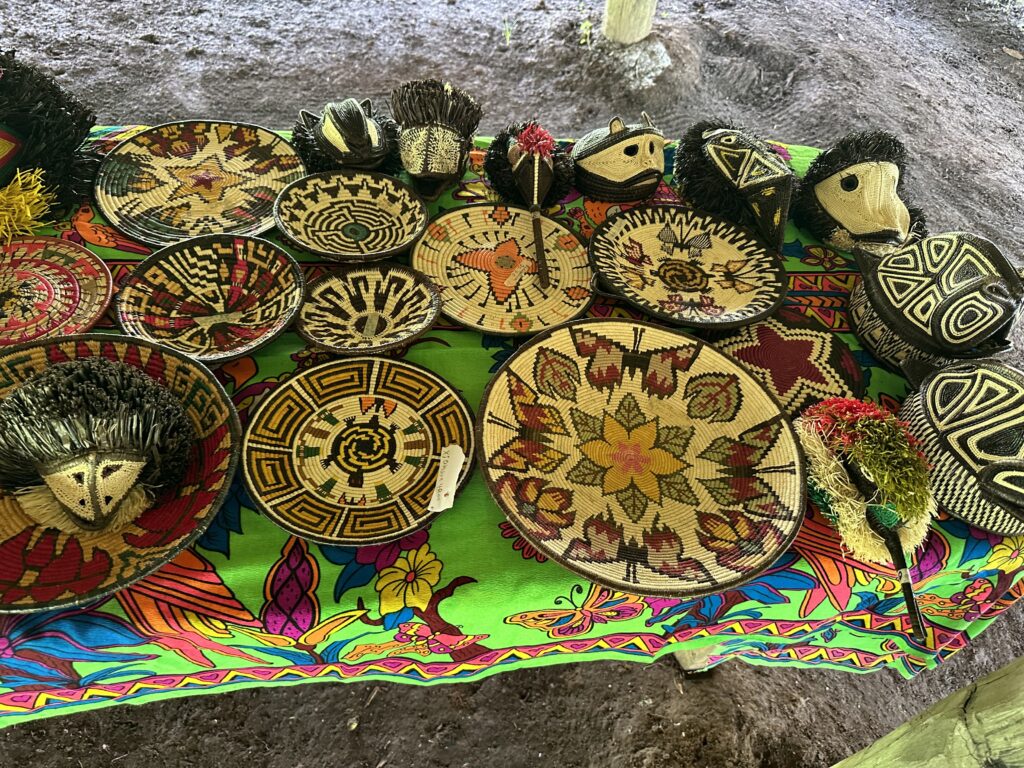

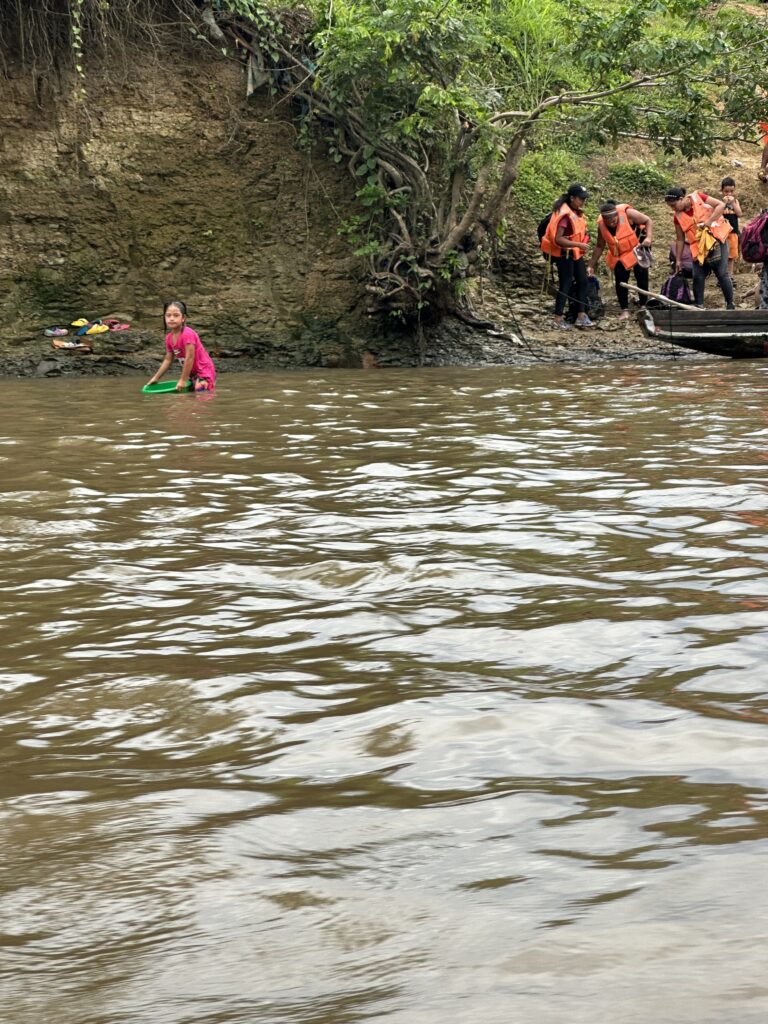
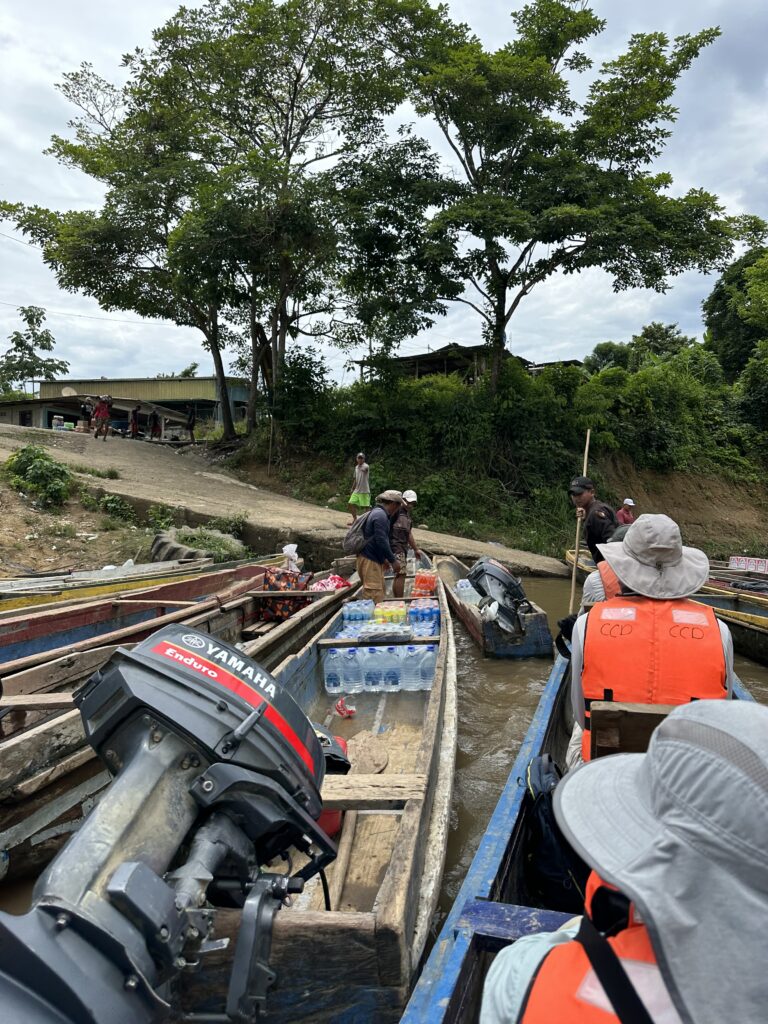
The village is a booming economy, boat men are working full time, food is distributed, vendors are selling everything a migrant might need for the next leg of the journey, shoes, socks, underwear, you name it the village is selling it.
I think the perception that I and a lot of people have that these are desperate people living on the edge of existence doesn’t hold water based on my observation. The group was overall healthy looking and happy looking and very well supported. This is a big, organized influx of migrants. Many people are making a good living off this and Panamá is doing little if anything to stop or resist it as a result.
In fact, it is like a comedy. There are road check stations along the way where they see who is in the car, check the driver’s papers and make sure everyone belongs when a few miles away is a steady stream of what they are pretending to be looking for.
Conclusion and Thanks
Most of the other birding days involved heading out to a location, usually a side road or on some private property, and either walking or driving around. There is just too much great birding to manage in this post but I tried to rep it in the photos.
One special note is that our group decided that Mirka was having way too much fun and showing way too much interest in the birds to be considered only a birdwatcher. We collectively graduated her to birder and setup her eBird account.
Thanks to Oscar’s dedication, we were able to get access to Reserva San Francisco on our return to Panama City. The reserve was closed for the day, but through his contacts we had the place to ourselves for several hours. Also, thanks to Oscar, we were able to get the Great Curssow.
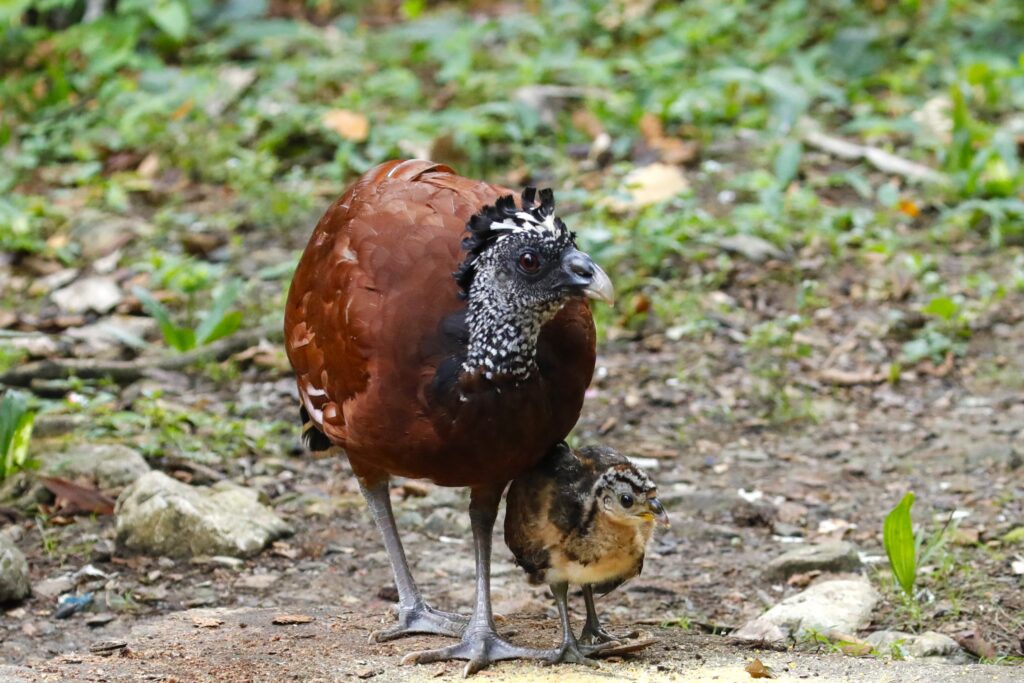
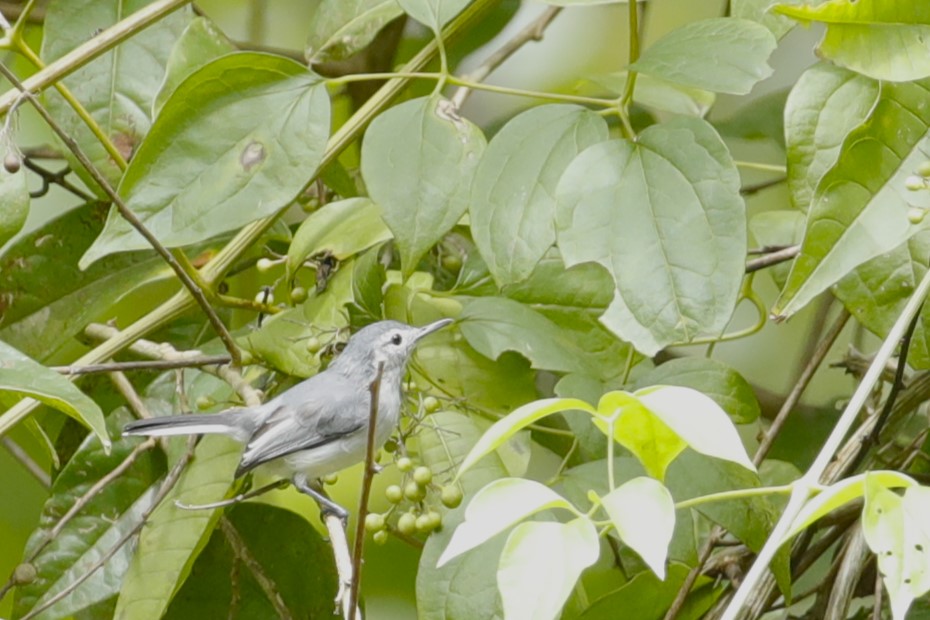

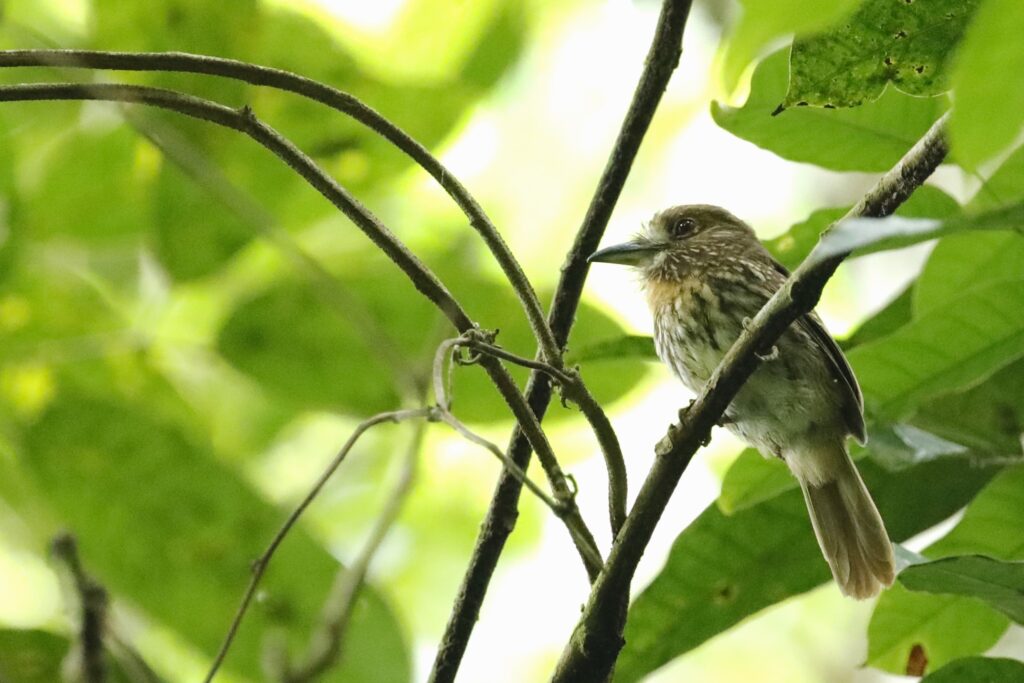
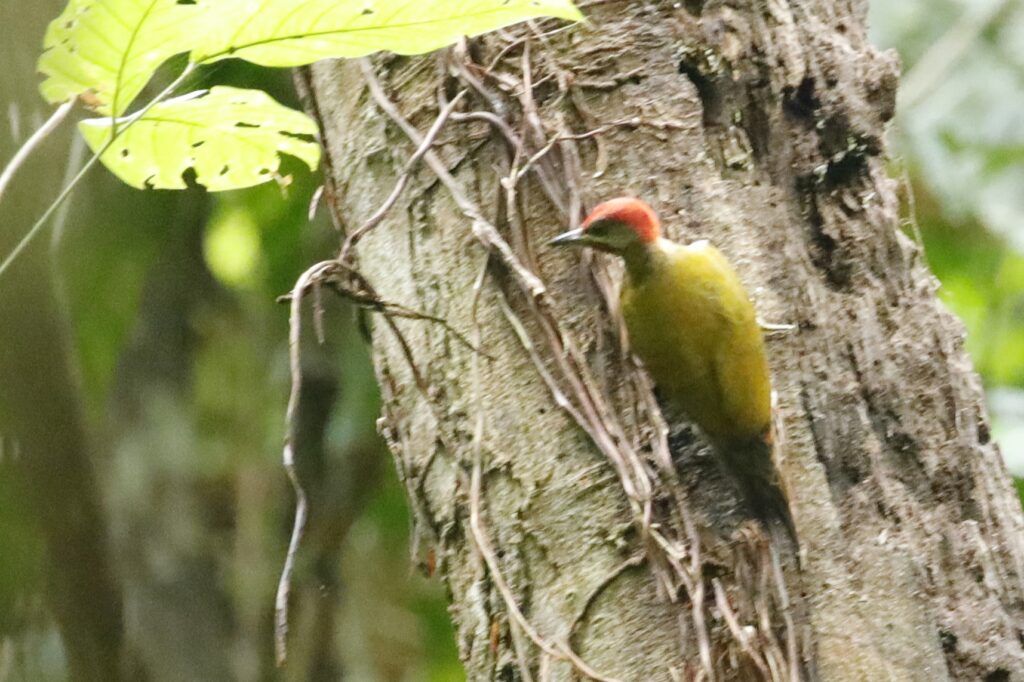
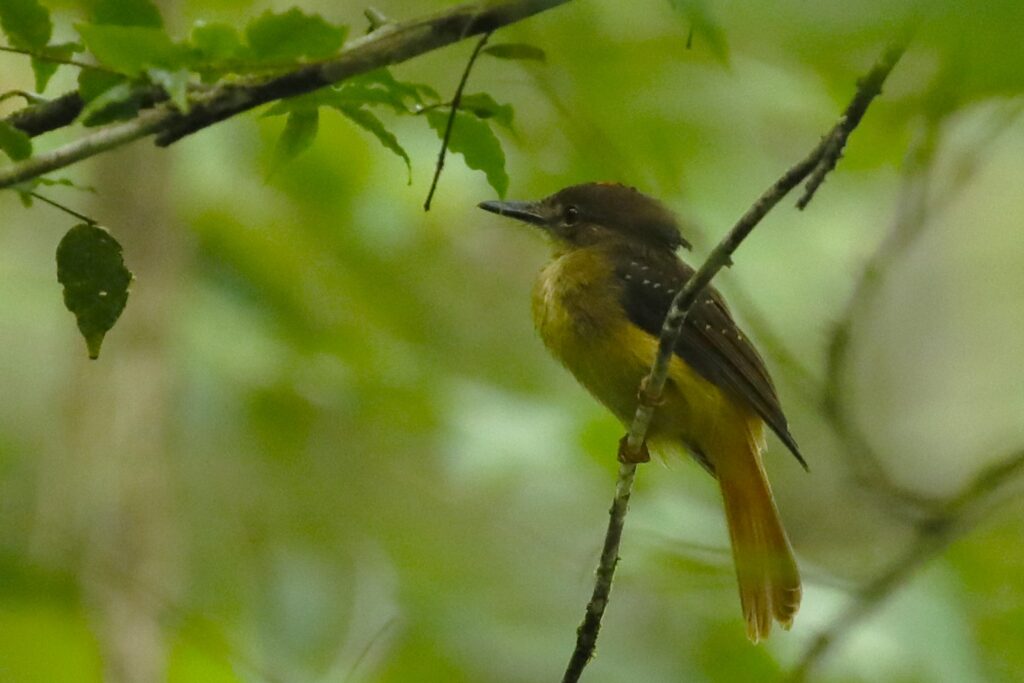
Another special thanks to Brett for being the list keeper for the week. He volunteered for this formidable task and we were all grateful. Also, to Liz for her never-ending positivity.
Mirka and I made wonderful friends in Liz and Brett and vow to go birding with them one day not too long from now.
Final count on the Canopy Camp adventure was 269 birds including 136 new birds in one week bringing my worldwide total to 1037. The trip report for this experience can be found in eBird at this location. This week will be hard to beat.

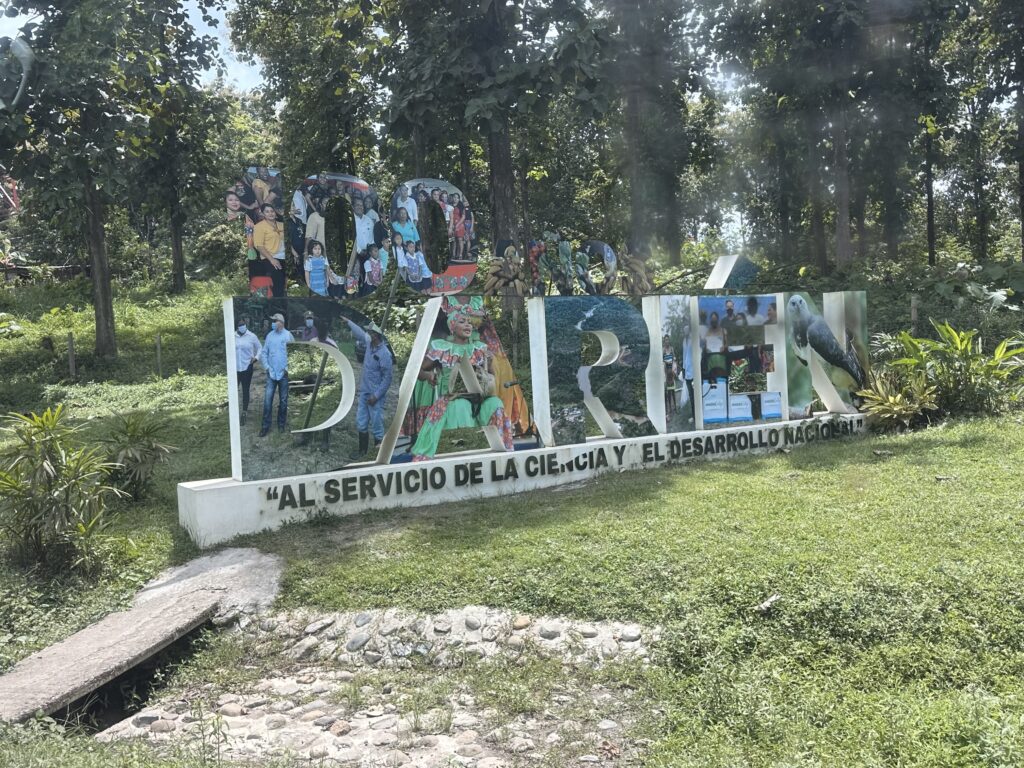
Joel, yet another birding and nature adventure that only few humans get to experience.
Hello Joel and other reading birders, a huge thanks for creating this wonderful blog. It so captures our experience at Canopy Camp. You will have a birding delight being with this company and in the wonderful country of Panama. As their name suggests, we became a Canopy Family. Joel has given me the perfect documentation of our Darien trip. His amazing photographs allow me to see the birds again. Oscar was our life-line to these birds, Brett, the young guy, was right there with the bird lists, sharing the knowledge, and Mirka has eagle-eyes!
Best to all from Liz
That is such a sweet and thoughtful comment! Thanks.
You’re making me want to adventure in Darien! Ruddy-breasted Seedeater was my favorite picture, along with all the Kingfishers! Really enjoy reading your blogs 🙂